Mt Fuji is the tallest mountain in Japan and thus should be treated with respect. If you try to go into it with no planning, things won’t go in your favor. Even if you do plan, things might not go in your favor either. The weather changes at a seconds notice and the altitude can get to anyone. Originally, we looked into doing a bullet climb where you just hike through the night to get to the top for sunrise. The 7-hour hike up didn’t seem too daunting, but then we factored in changing weather conditions, altitude, and the 5 hour hike back down. We knew it was time to bite the bullet and book a hut.
Booking A Hut
I spent a long time researching and comparing all of the huts. I think in most cases, the higher the better, but there comes a point where you’ll be too high up to be comfortable; cost was also a factor. In the covid-era with lower capacity, each hut seemed to charge around 10,000 yen to stay. That’s pretty pricey for a sleeping bag and two meals, but it made all the difference between a great trip and a miserable one. I had my eye on Ganso-muro or Fujisan hotel since they were right in the sweet spot of 3200-3400 meters. It was enough hiking to be tired by the time you got there, which was a concern with some of the lower huts, and then it was only 2 hours or less to the top. We ended up picking Ganso-muro based on how kitsch the website was and because there was a shrine next to it for some hopeful starry torii gate pictures. They also had the easiest system for making a reservation (fill out a form online, they send you a confirmation email and then a reservation email). There was no deposit like at other huts, so if anything happened we weren’t worried if we couldn’t make it. I’m not sure if this is a normal procedure for them, but it worked out well for us to pay in cash on arrival.
Mt. Fuji 5th Station
There are buses that run direct from Shinjuku to Mt. Fuji Fifth Station during climbing season (July-September). We caught the 9:05am-11:40am. This left us enough time to acclimate at Fifth Station (2300 meters) and set out at 12:30pm. I’ve done enough mountain hikes to know how my body handles it. My friends, however, are sea-level dwellers, so we took it slow. We used the bathroom, got our packs ready, and picked up hiking sticks for 900 yen each. Nobody had any breathing problems, so we set off after making a 1000 yen donation for conservation efforts (it is not mandatory, but we split it between the 3 of us and felt good about that).
The Hike Up
There are 4 trails that you can take to the top. They all get you to the same destination, so we took the easiest and most popular route the “Yoshida Trail”. This is where all of the huts are built anyway so it was the obvious choice. The huts are great mile markers for taking breaks on the trip up. They have benches to sit on and rest for a moment as well as food, snacks, and other supplies ranging from water to canned oxygen. One of the fun things to do on the hike is to stop by a hut and get your stick branded. At 300-500 yen a pop times 14 huts, that makes an expensive stick by the end if you want to collect them all. We ended up just getting a few designs that we liked along the way.
We’re all in pretty good shape, so we had no real trouble on the way up. We did it right though and took lots of breaks on the way, always checking in on the other’s condition. As the clouds swallowed us up, the temperature started to drop. I don’t like to hike in the hot sun, so the light mist that descended on us was very welcome. However, as we neared the 8th station at 3100 meters, what started as a gentle mist slowly turned into wind and rain. We only had three more huts to go though, so we powered through and made it to Ganso-muro by 4:00pm, pretty wet but not completely soaked through.
Ganso-muro
Based on the website, I thought it would be a small place owned by an old Japanese man telling us to come in from the rain. In reality, we were greeted by a staff of 6 young guys passing out towels to wipe our clothes as well as plastic bags for our boots. The old man was sitting behind the reception counter, while an older lady was standing in the kitchen over a giant pot of Japanese curry, aromas wafting out of the door. After some normal check-in procedures, they showed us the time for dinner: 5:00pm, and our wake up call: 2:15am and then took us to our bunks. I have to say, there’s just something special about being wet and changing into warm clothes and then going downstairs to some hot tea and a plate of curry and rice. It takes me back to that same kind of pure warm comfort of a snow day where my mom has hot soup and cocoa waiting for me.
After dinner, we took our breakfast boxes back to the bunk and packed for the next day. Another benefit of our booking was an 8am check-out time. This meant we could leave the bulk of our stuff at the hut and come get it on the way back down. We weren’t tired yet, so we played some card games and hoped for a good sunset. It wasn’t raining anymore, but the sky was just clear enough to get a glimpse of it. While out there, we made friends with some Japanese guys and talked about the last time they climbed Fuji. They said they were going to leave at 1:30am, which made us decide to get up a half hour earlier than scheduled.
The rain started again, so we decided it was time to get some sleep. That lasted about an hour, before I lay there awake listening to a cacophony of snores. I checked my phone, with its constantly changing weather report and saw it was clear outside again. The sky was indeed clear for the next hour or so. I spent it enjoying the cold solitude of the mountain under the stars. Towards the end, Connie was wondering where I was so he came out to take some photos with me. Rest came easy after this.
To the Summit!
I naturally woke up about ten minutes before our alarm at 1:45am. Connie was up, too, so we put our stuff on and got Malek up. When he went to the bathroom, the doorman told him that we shouldn’t climb the mountain now. The conditions were too dangerous. I checked what my phone thought. The next two hours would be 18km/h wind with heavy rain between 0 and 3ºC. We didn’t come this far and pay 10,000 yen to stay in a hut, just so we could miss the sunrise from the summit. We told him that if we thought it was too dangerous we would turn back. We got our shoes on and left to a chorus of “気をつけて. 本当に.”. “Kiwotsukete. Hontoni.” Or as it translates:
“Be careful. Really.”
2:00am As soon as we opened the door, we were wet. The wind was whipping and the rain was pouring down. We put our heads down and started back towards the top. Every corner was another gust of wind, we found minimal shelter in rocks and switchback blockers. There were only a couple more huts to huddle at and acclimate. It’s much harder to breathe when the rain is coming down and the wind is pushing you in all different directions. We had to rest at the ninth station for a long time to get out of the wind. Then we played the game of how much heat can you afford to lose by stopping vs. taking time to acclimate out of the weather. When the hands go numb, it’s already past time to start moving again. We saw a group of headlamps coming towards us so it was now or never. As we turned the corner the wind gave us one of those blasts where you have to lean into it to stay on your feet. Fuji wasn’t taking it easy on us, but it was one last effort it had before the clouds broke. We could see lights on the summit, more importantly we could actually see in front of us! We were finally in the clear.
Fujisan
4:00am At the top of the trail, we were greeted by a torii gate. As we passed through and looked back, we could see the orange glow of the sun preparing for its show. It was still freezing and windy, but at least the strong winds started drying our clothes. The three of us arrived at the shrine right as they started their morning prayer. We were the only witnesses to their chants and beats of the drums heralding the sunrise. It was at this point, that we knew we made the right decision to climb when we did. Sometimes you listen to the warnings, but other times you have to listen to your gut.
Next to the shrine were two restaurants with all the warm food one could want. That wasn’t what I was drawn to though. Instead, I spotted one of my favorite parts of living in Japan: the vending machine. I love the ever-present vending machines that often pop up in places you never expect. Since they serve warm and cold drinks, one of my favorite tricks in the winter is to buy a Royal Milk Tea and use it as a hand warmer. Shaking and with numb hands, I managed to put the money into the machine and get my sweet relief. It burned my hands a bit at first so I kept it in my jacket, but it was exactly what I needed to bring the life back into me, I was finally ready to go forth and capture the sunrise. The beautiful absurdity of a functioning vending machine on top of the highest mountain in Japan is the exact reason I love this country so much.
I set up my camera to get a timelapse of the sunrise. Meanwhile, Malek felt the altitude really hard all of a sudden, he had been feeling it since the 9th station but pushed himself to the top. Always remember, it doesn’t matter how physically fit you are, the altitude can still get you. He felt dizzy, had a quick puke and then headed back down to meet us at the hut. Best thing you can do in that situation is to go back down.
While my good camera was recording, I walked around with my phone and got to see the crater with purple skies above it and found a perfectly placed torii gate to watch the sunrise.
I could see the full sun by this point, so I got Connie and my camera to go take pictures together at the gate. I’ve looked at other people’s photos since then and this torii gate is normally swarmed with photographers. Because of the weather conditions, there were only a few other hikers that made it to the summit by this time. Also, I wanted to say that Covid times have taken away so many opportunities for me since I’ve lived in Japan, but this day it gave me my own Mt. Fuji.
After hiking the hill, we took a moment to really soak in the sunrise. It’s definitely one that I’ll remember for the rest of my life.
Connie and I both like collecting goshuin, so we each picked up a top of Mt. Fuji one, my first book is almost full now and this one will definitely be for my last page! They will also brand your walking stick at this shrine, however, while we were up top somebody stole mine.
The altitude started getting to us too, though. I knew we’d be better if we ate, so we shared a protein bar and drank some water. We didn’t hike all around the crater (normally takes an hour), but we’d had our fill anyway. We headed back to the hut at 5:45am chatting about how a bullet hike should never be the way to do Mt. Fuji. The changing weather and altitude is no joke. If we didn’t have a hut to change in, it would have been a miserable hike back down.
The Descent
Going down is much easier on everything except the knees. When I was younger I used to think it was the best, but now I get why it’s difficult for older people. Not having my stick didn’t help and I kept looking at other hiker’s sticks all the way down to see if they took mine. It was now a beautiful day though and the sky was clear all the way back to the hut. We made it back to check in on Malek by 6:30am. He was doing okay and had just been resting since he left us, he also helped me identify the stick thief since he had taken mine by accident during his haste to get back down. We put our packs together and were out the door by 7:20am.
The Yoshida trail is actually a big loop, so you take the main trail up and then take the bulldozer trail to go down. That way you don’t run into anyone ascending. The bulldozer trail is how all of the mountain gets it supplies, including the vending machines up top. The hike down was pretty uneventful and it wasn’t until the end that it turned back into mist and rain at the base of the mountain.
We were back to the Fifth Station by 9:20am. I had originally booked the 12:30pm bus that morning just in case, but because we got back so fast, I was able to rebook for the 10am using my phone (it only costs 100 yen to cancel a bus reservation up to 10 minutes before your departure). We changed in the bathroom and picked up some presents for friends at the gift shops. The bus pulled up as we were walking over bringing an end to a hellish, wonderful, torrential, body-testing, incredible trial with a perfect sunrise from the summit as our prize.
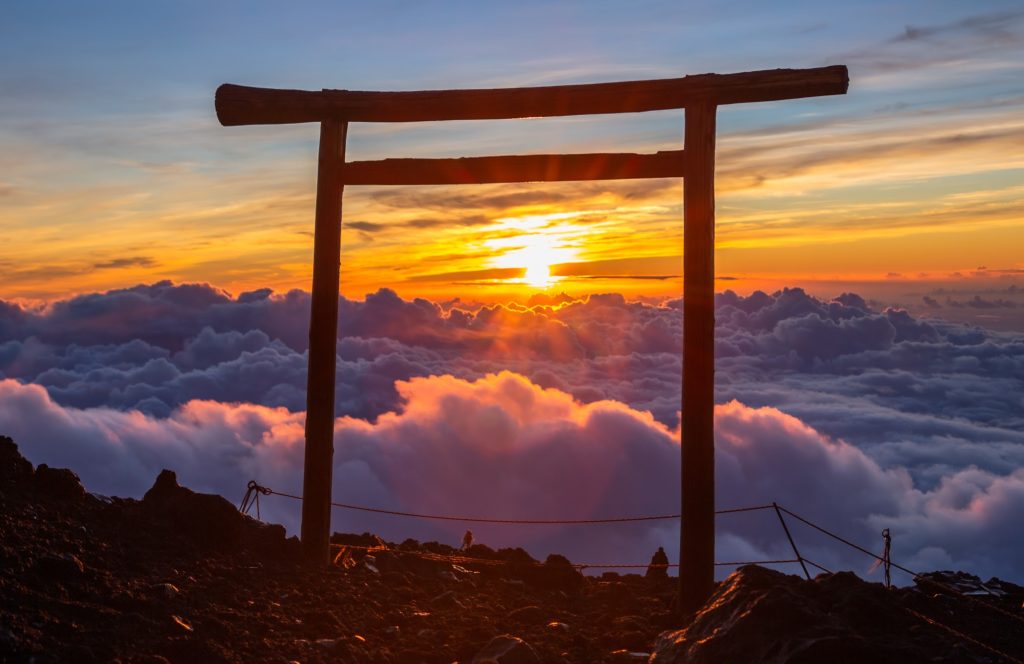
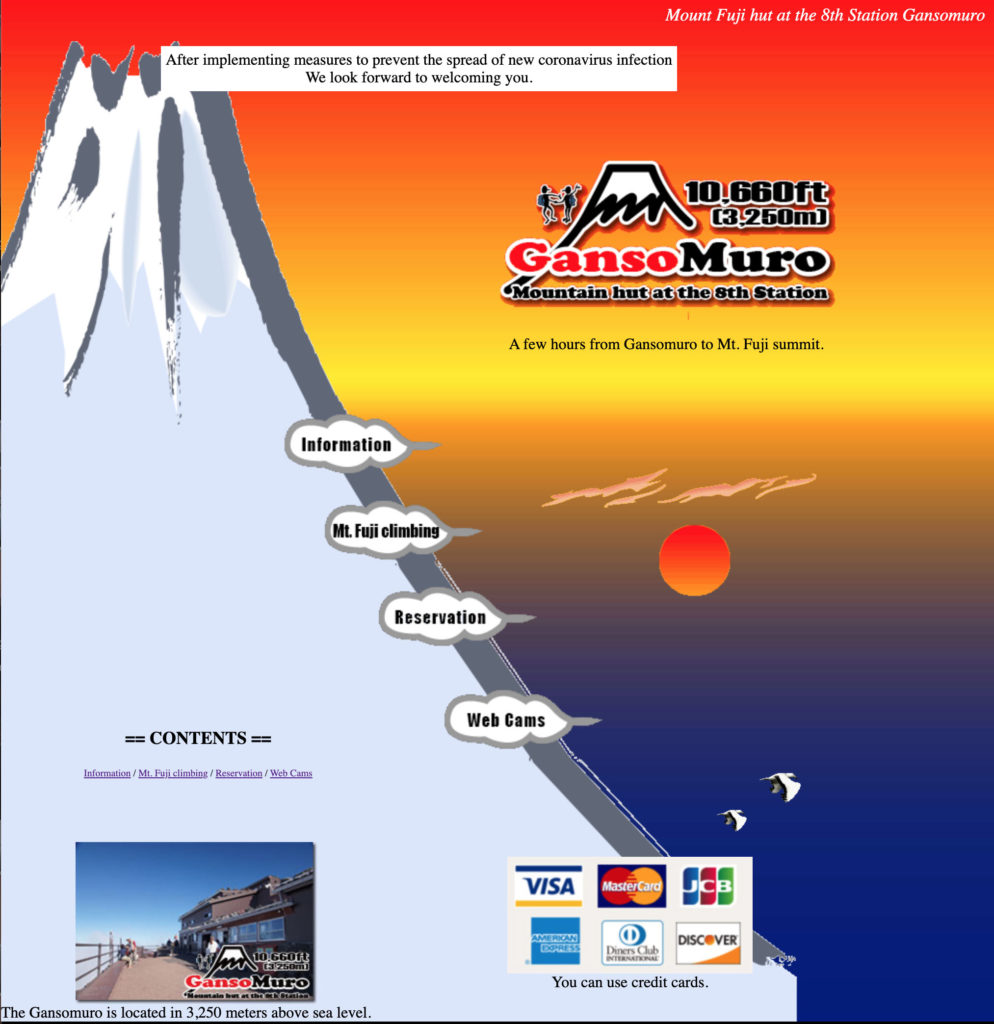

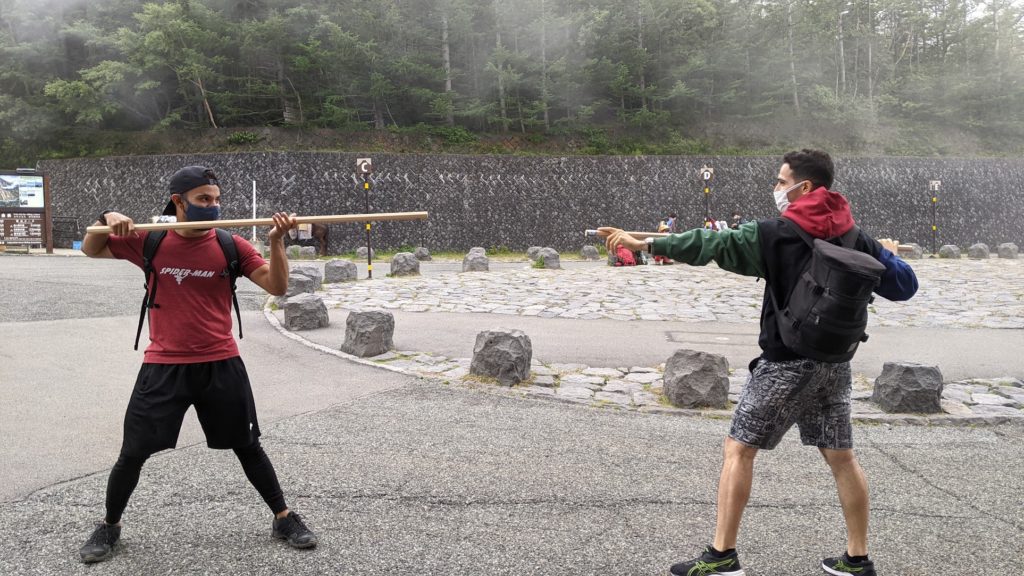
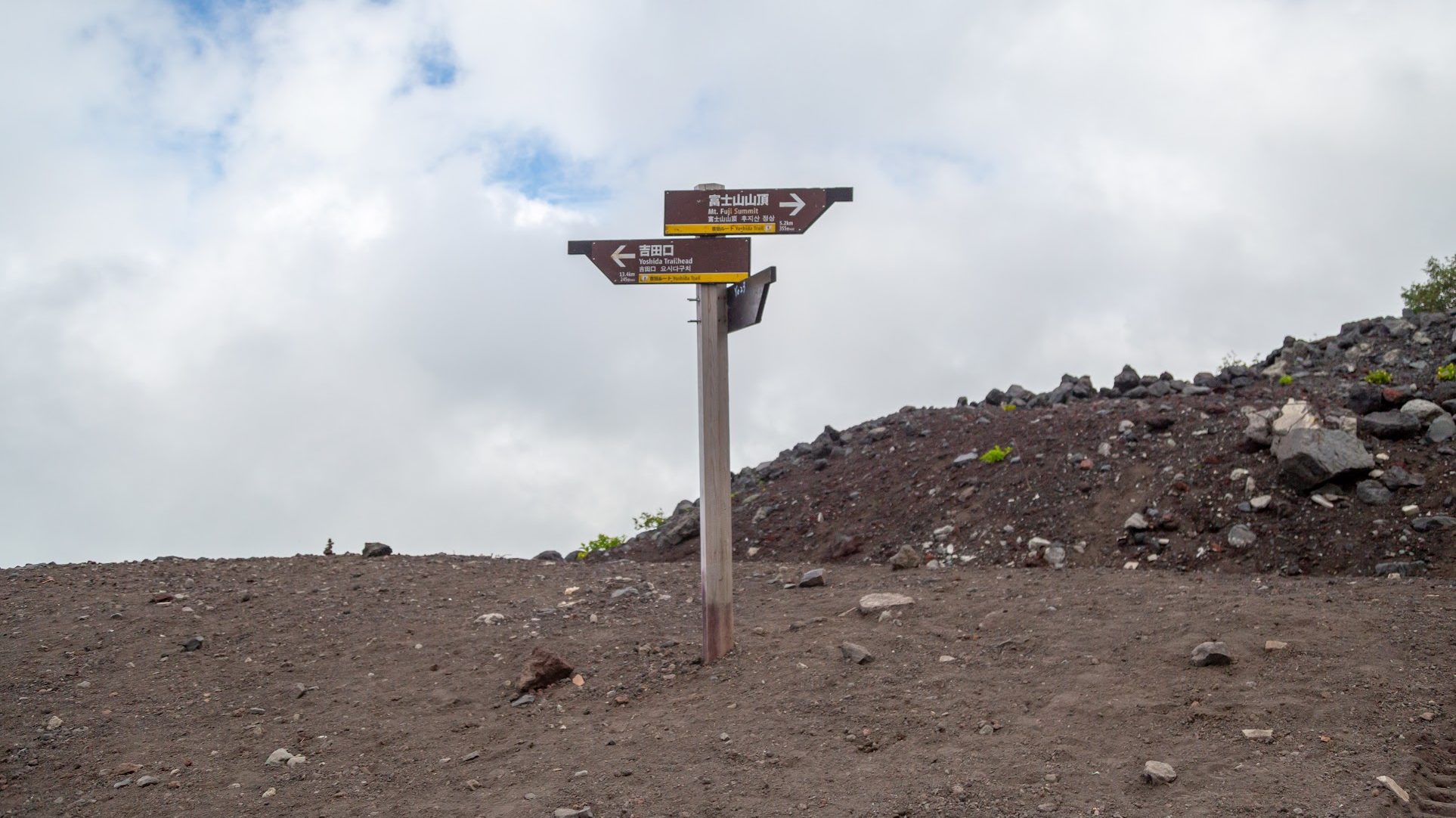
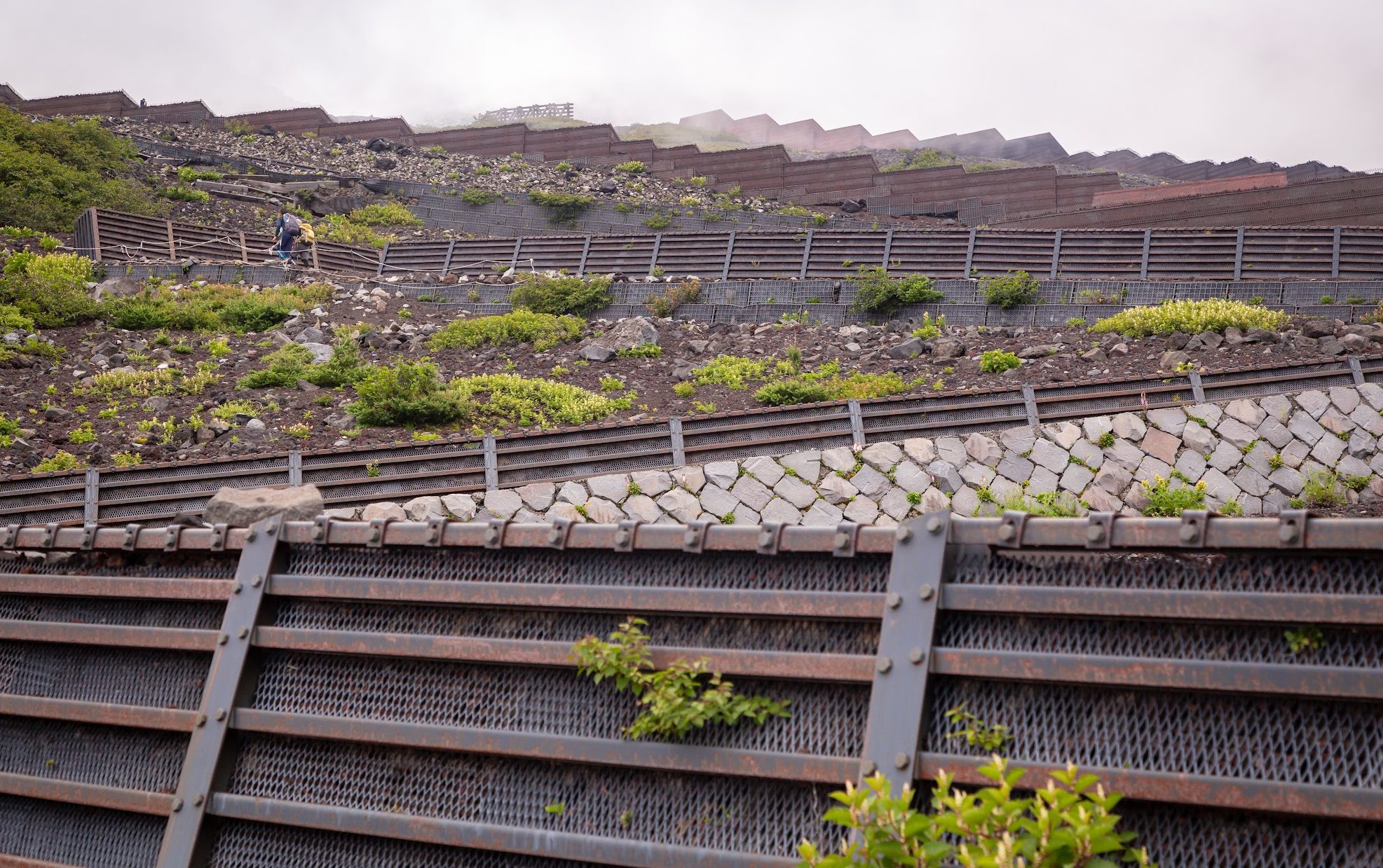
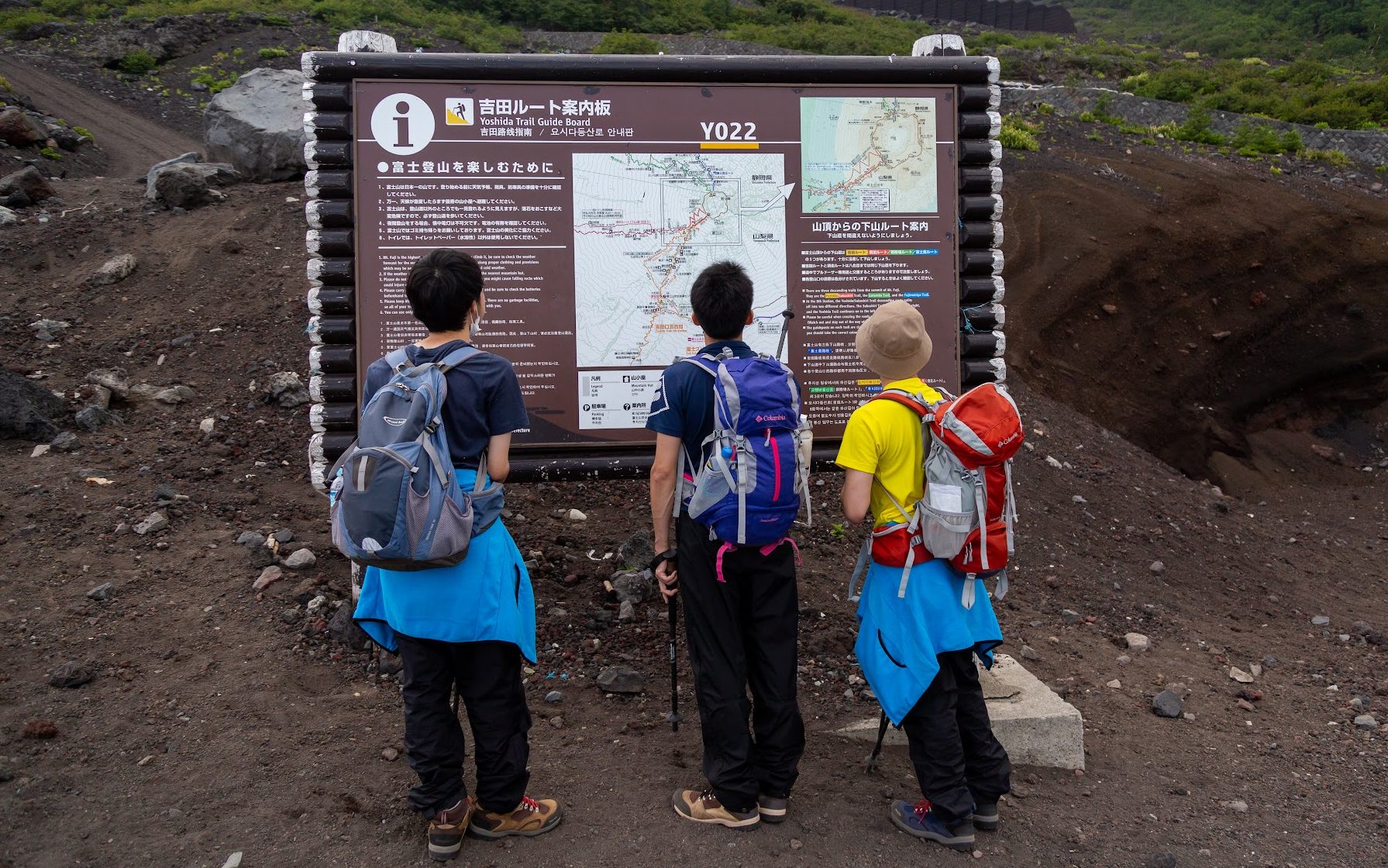
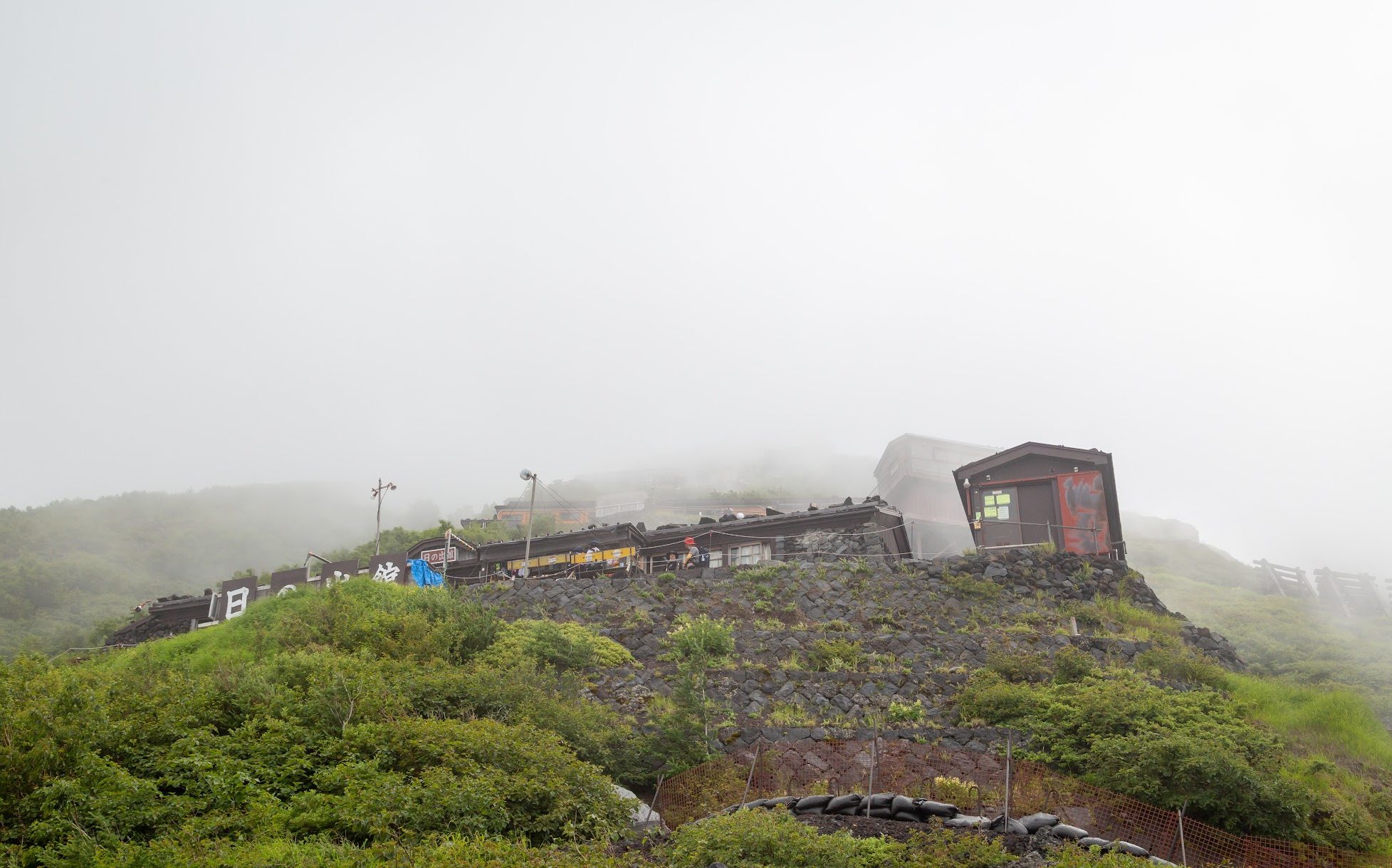
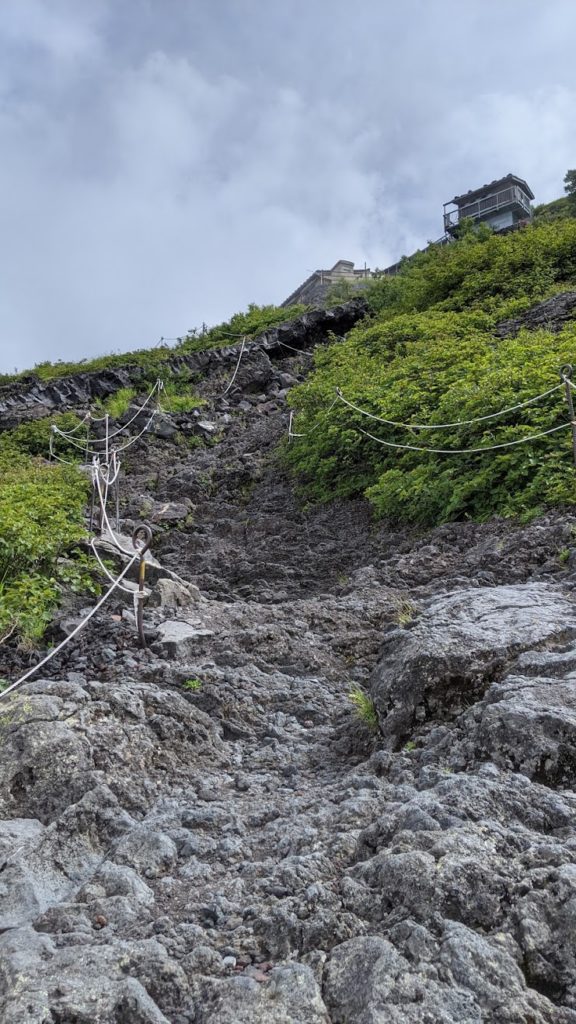
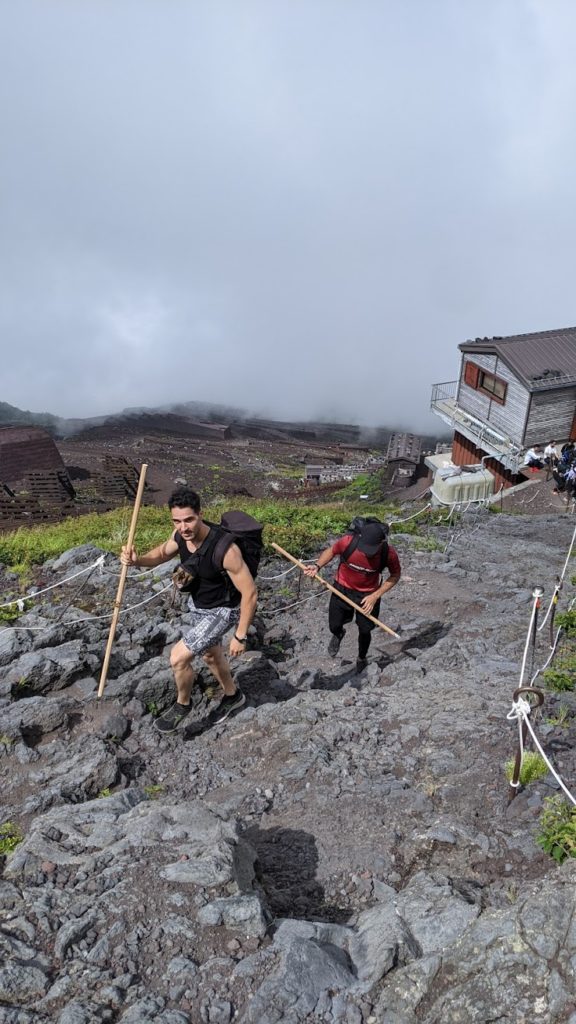
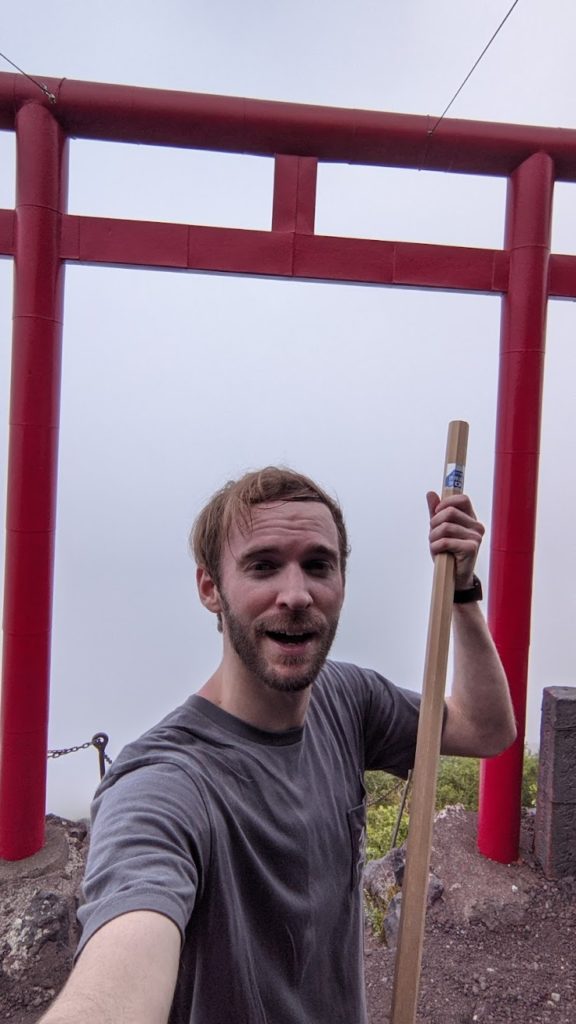
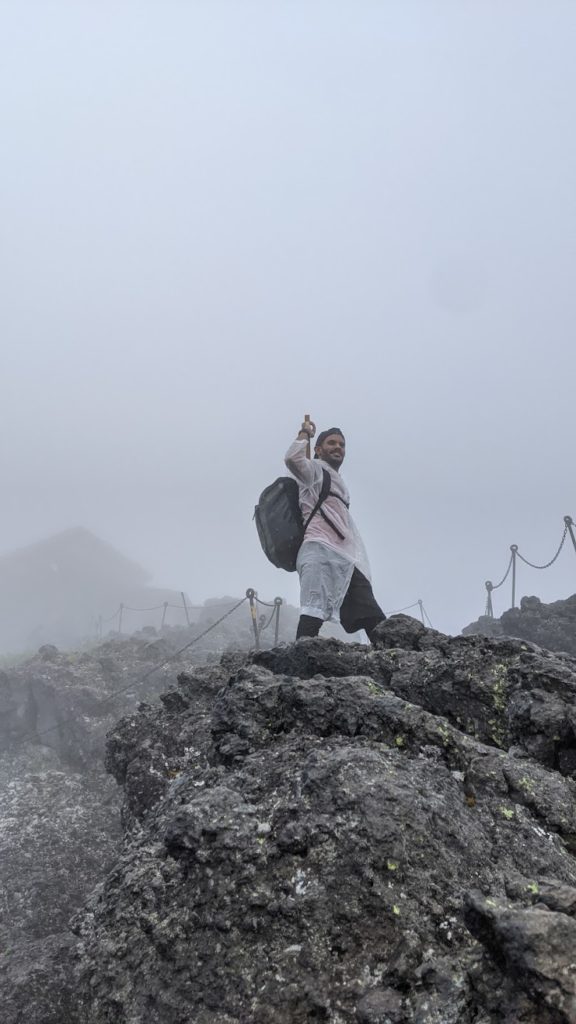
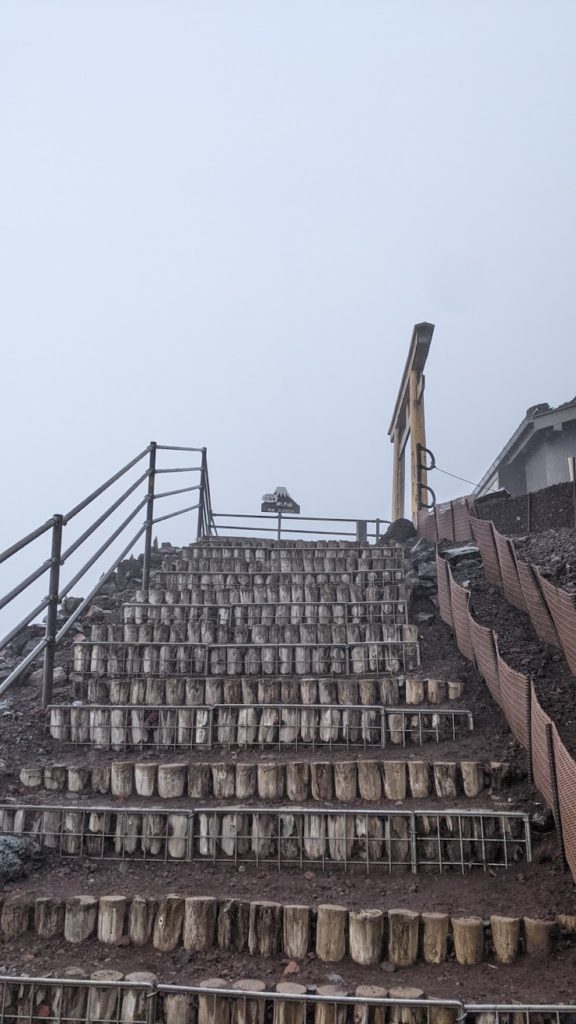
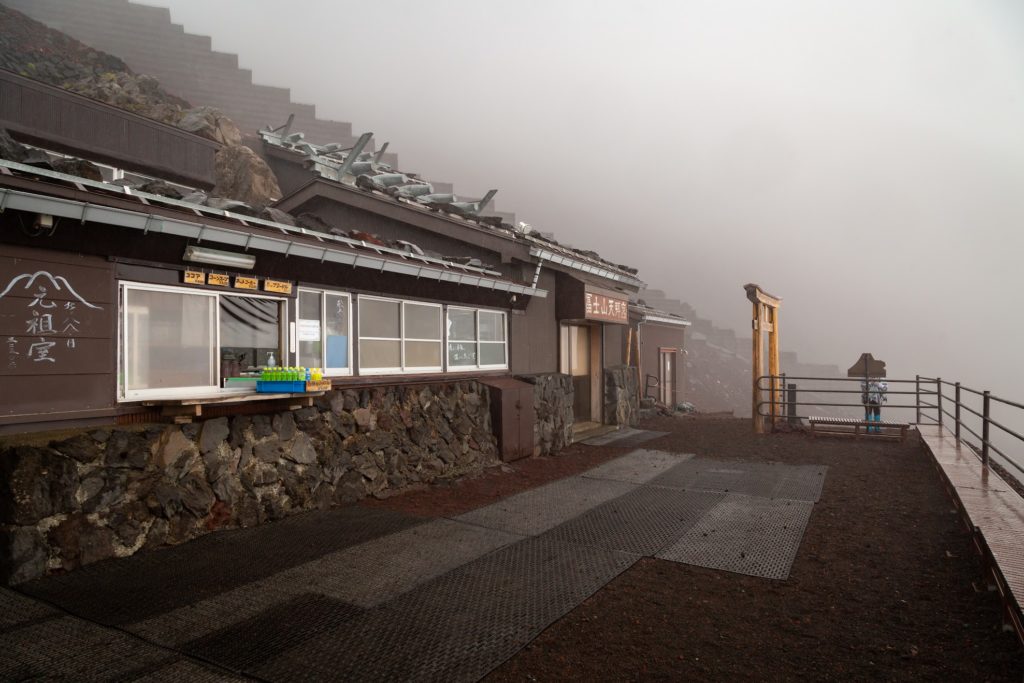
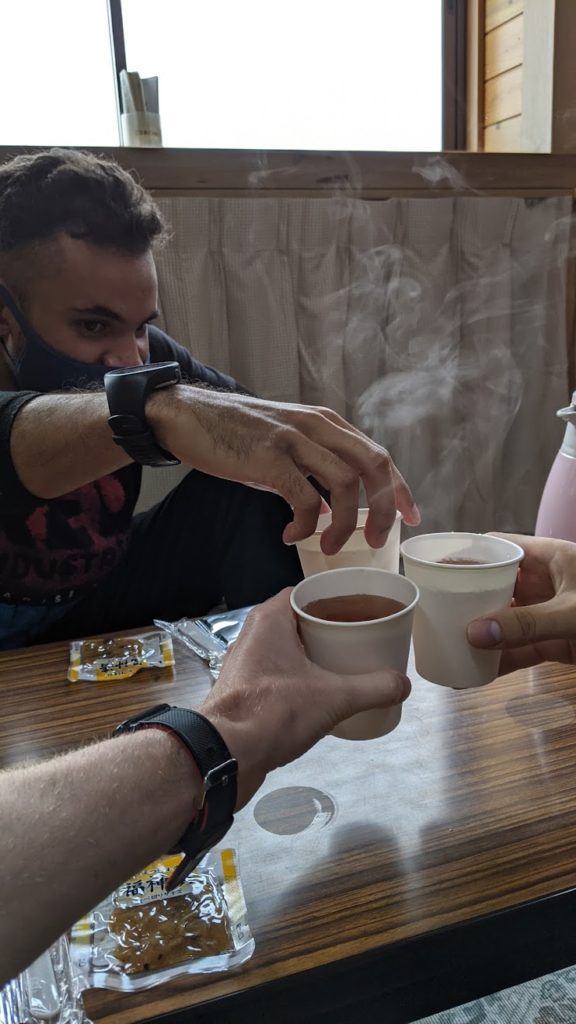
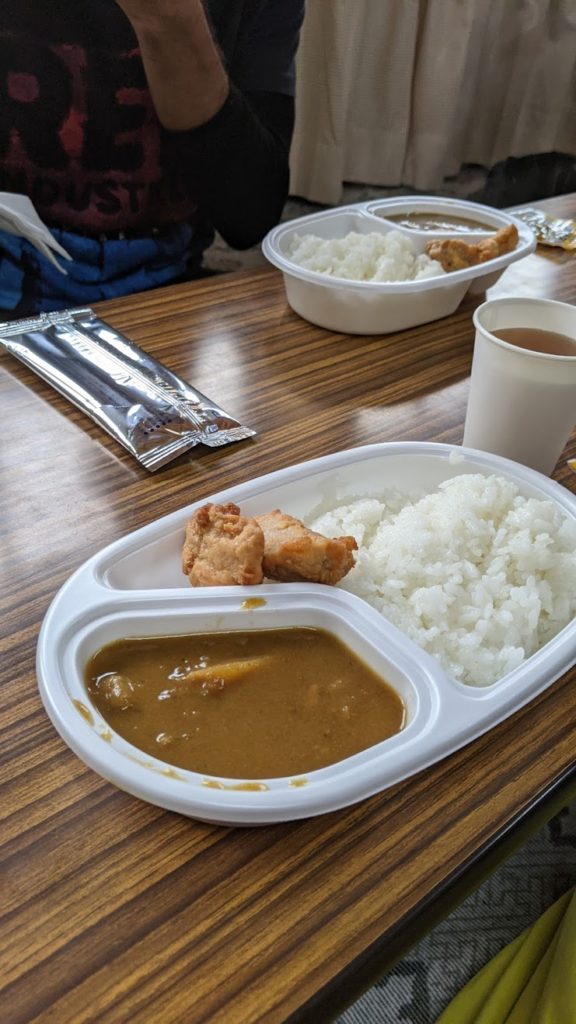
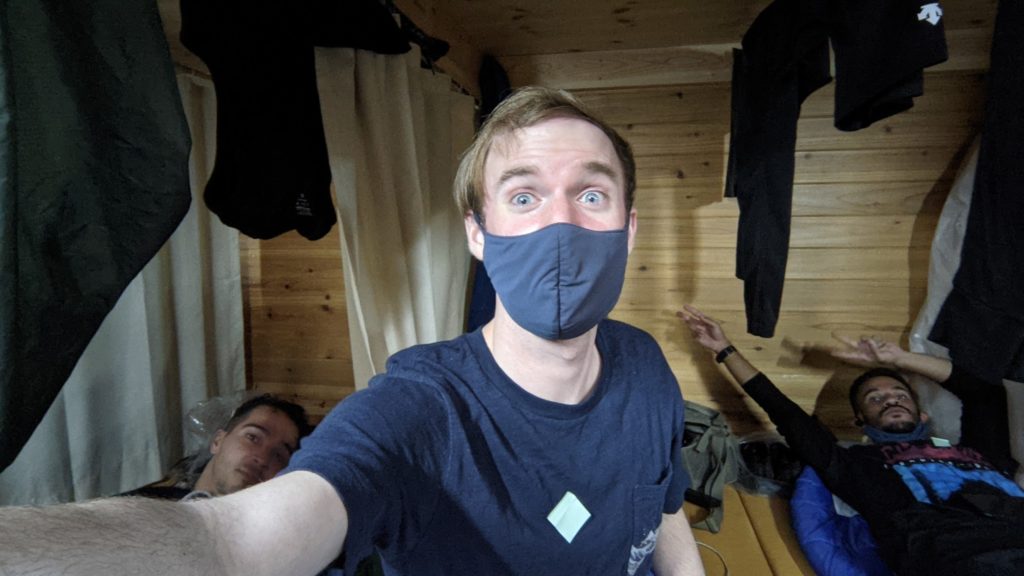
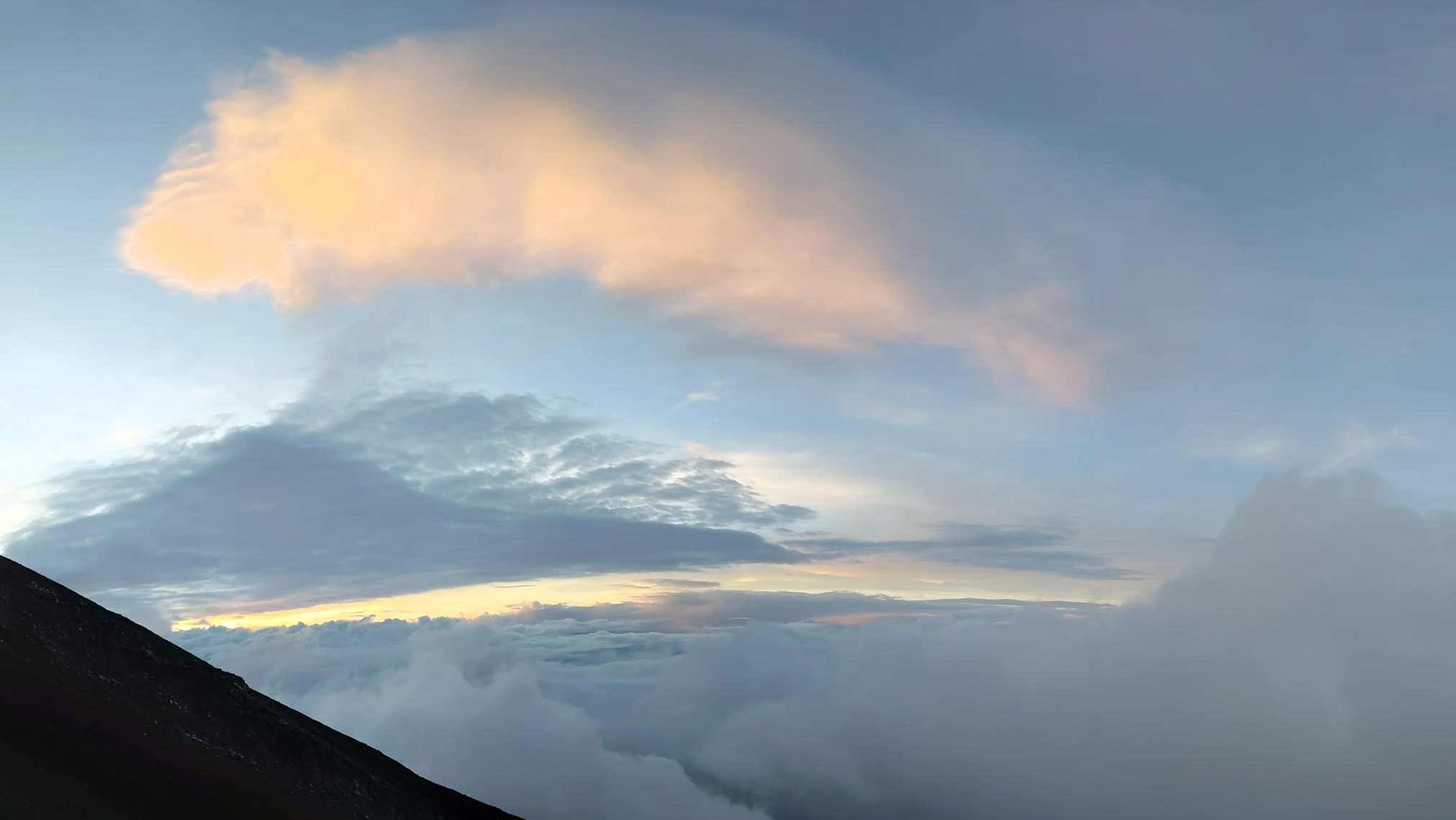
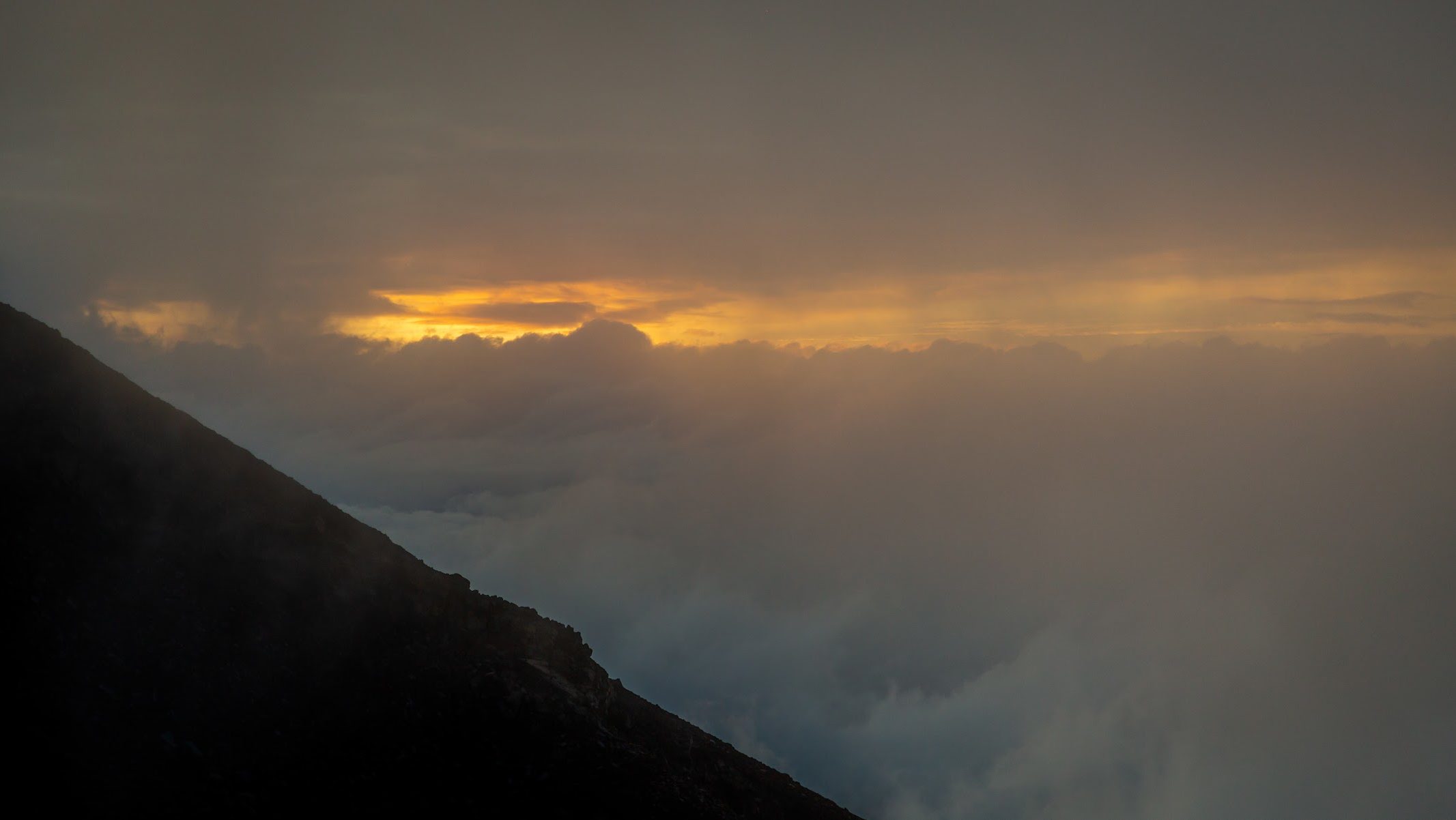
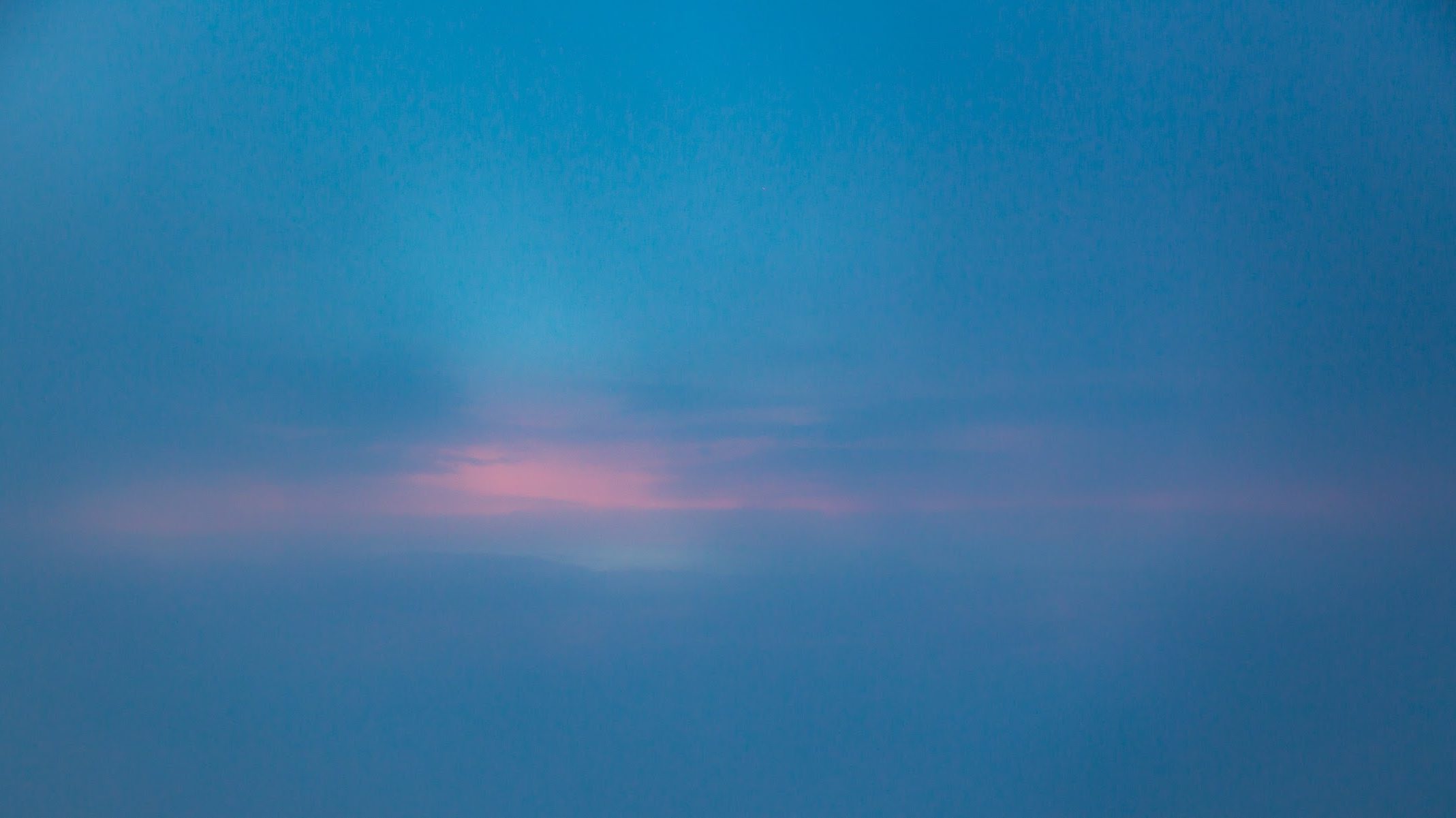
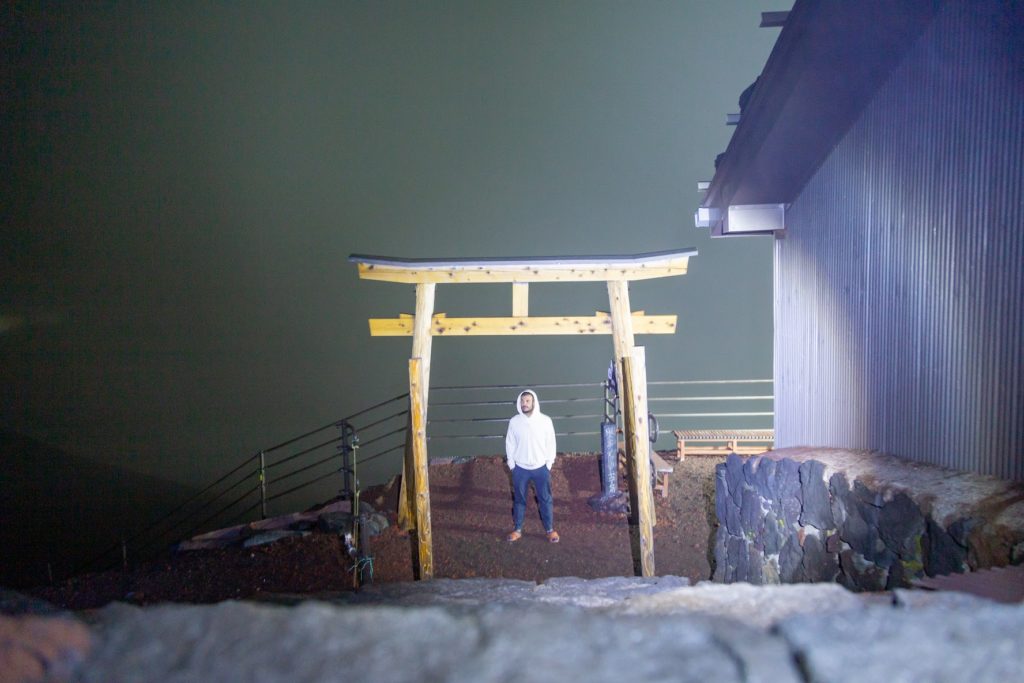
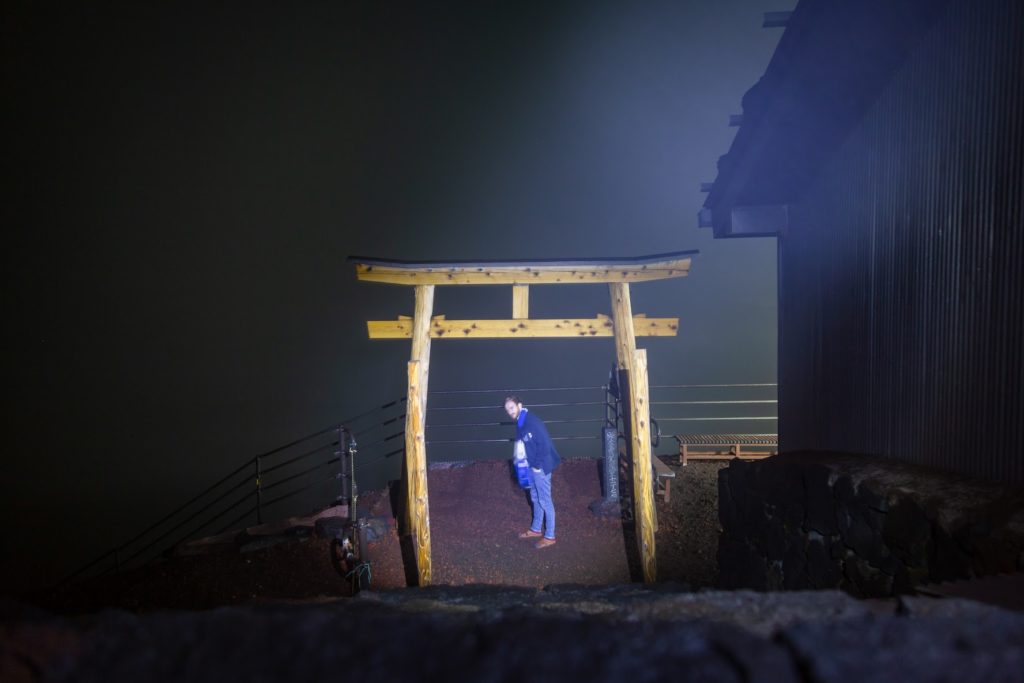
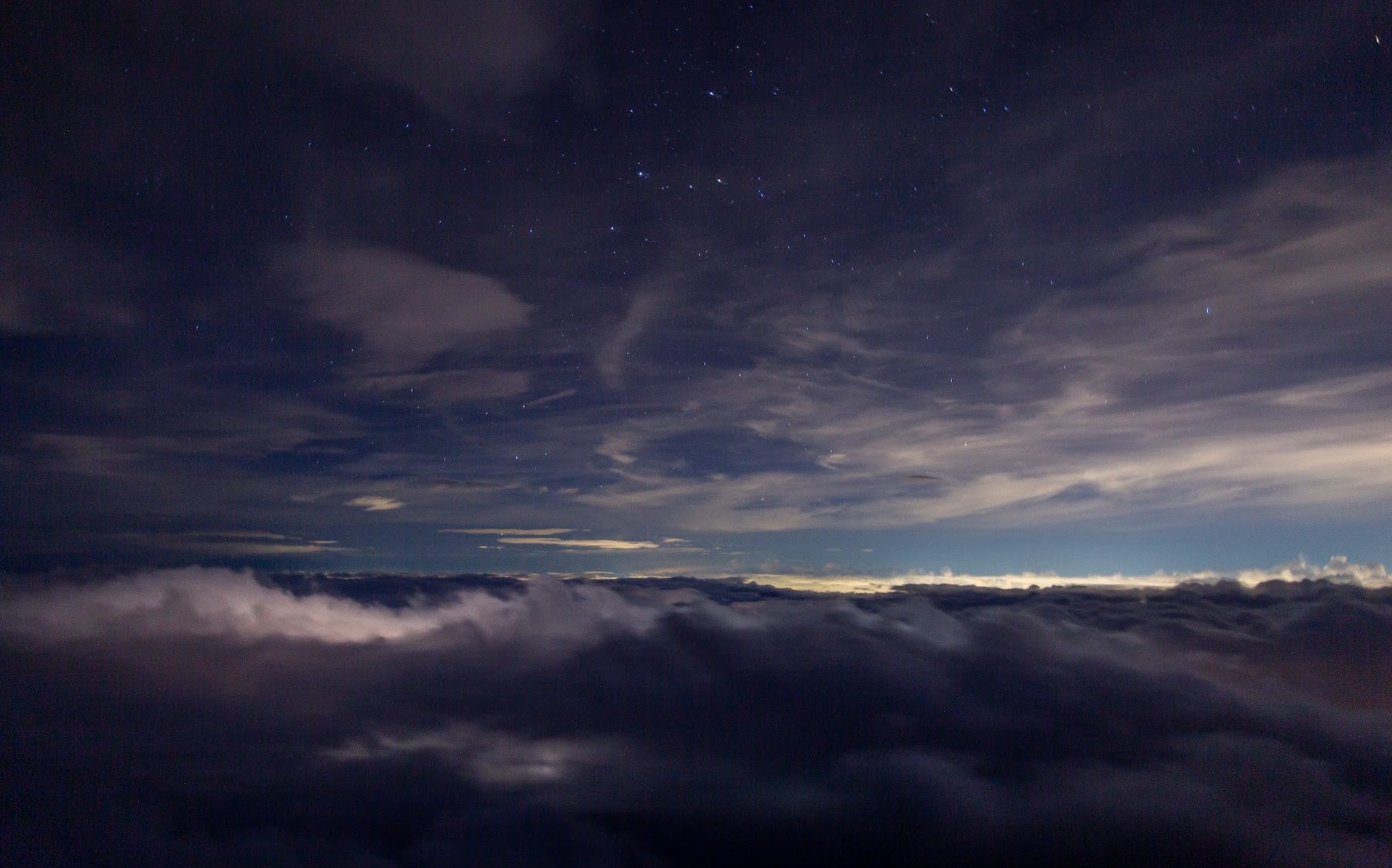
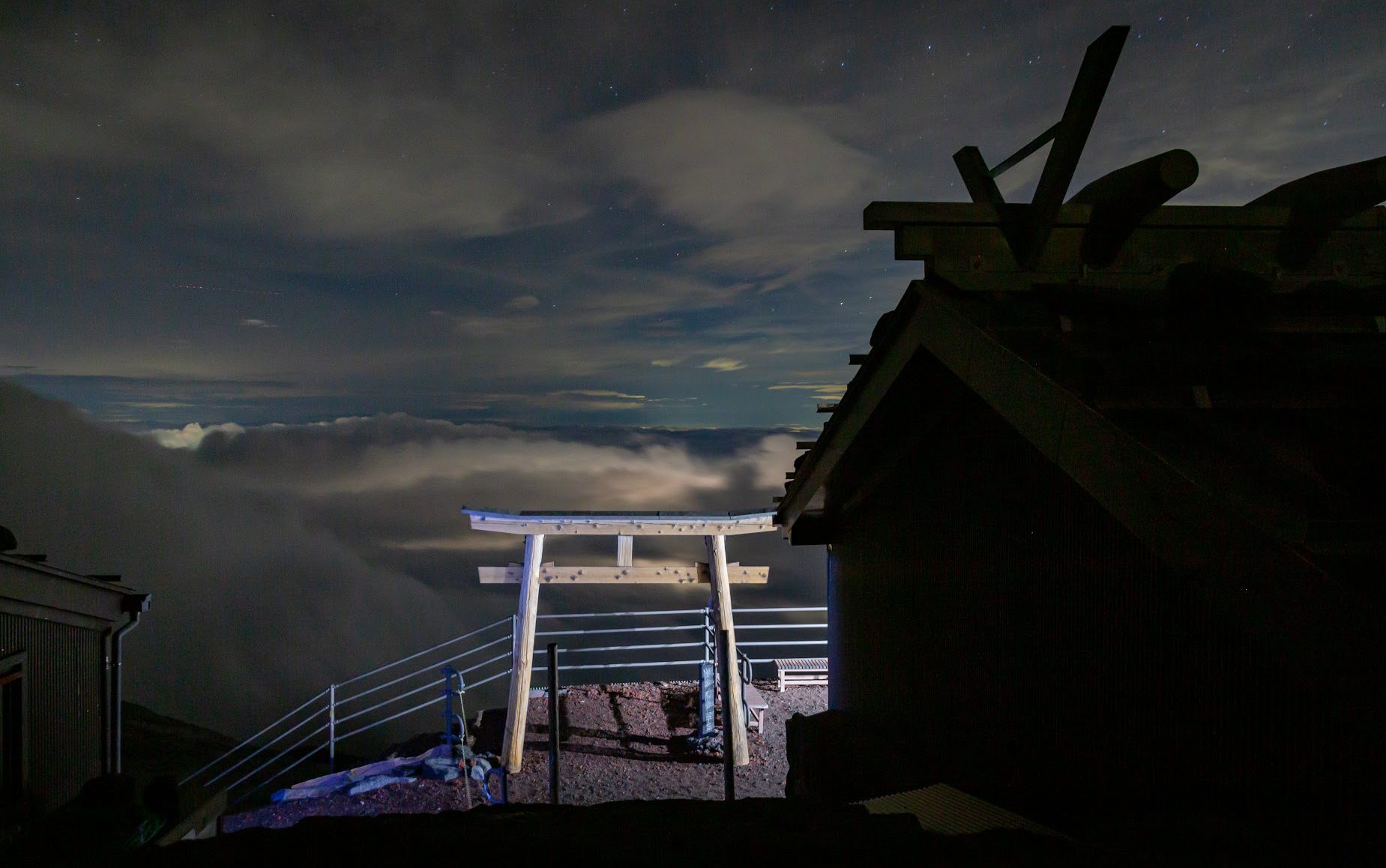
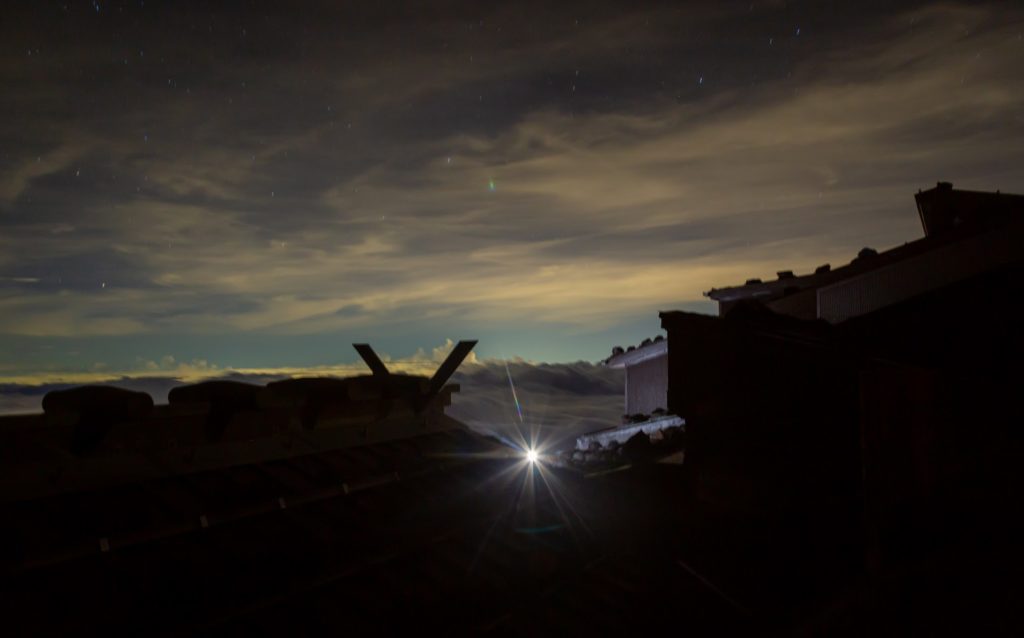
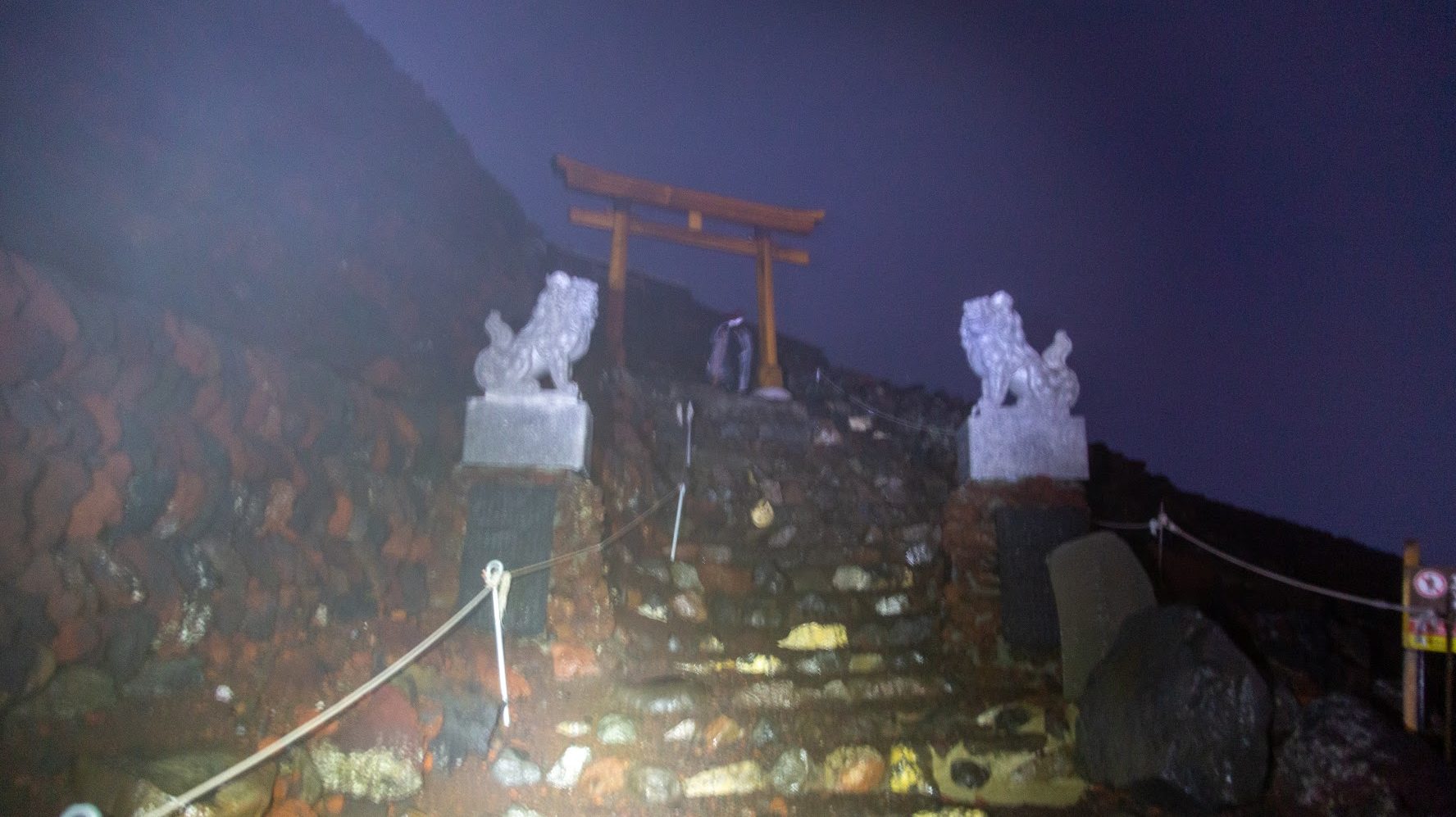
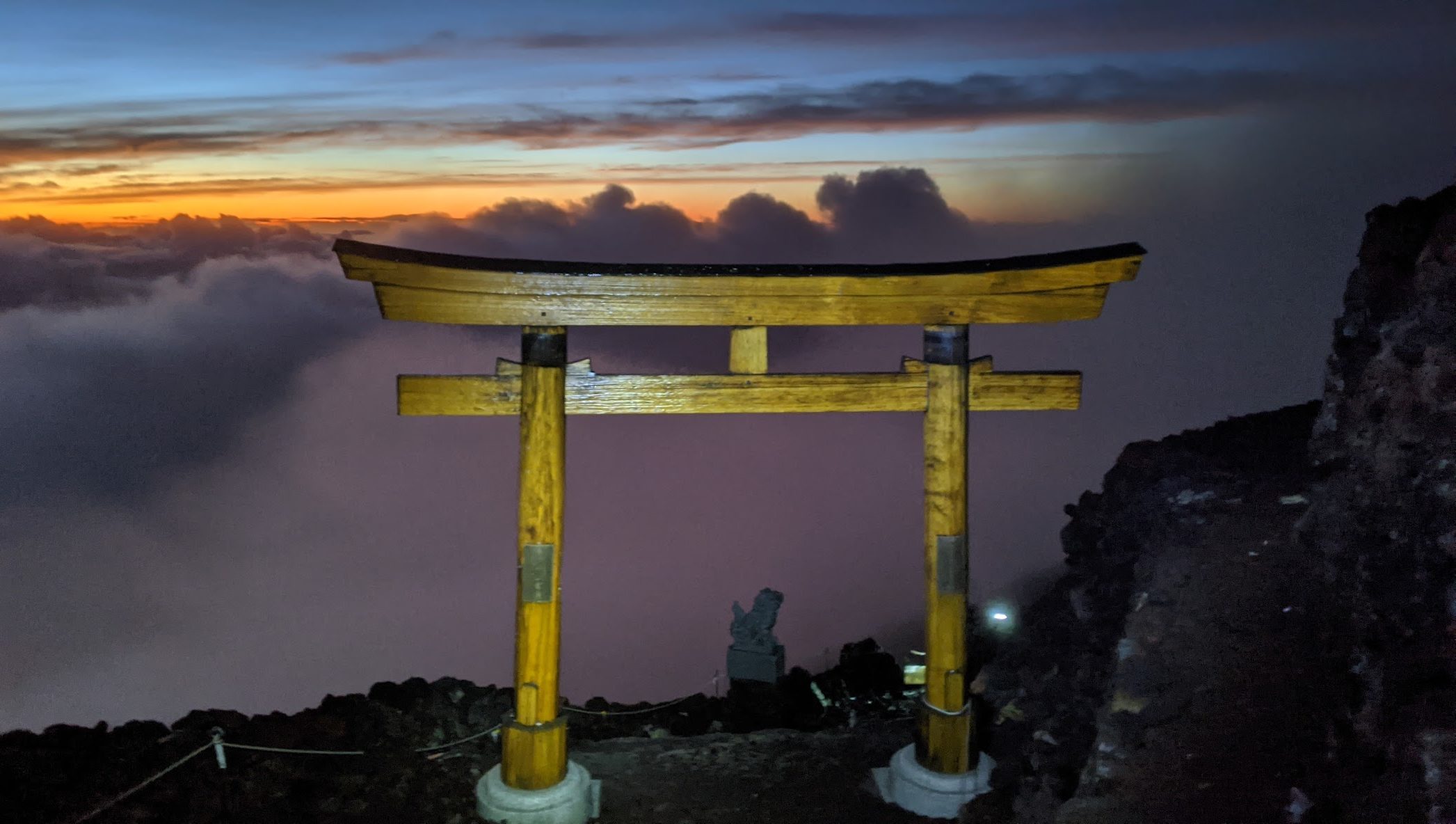
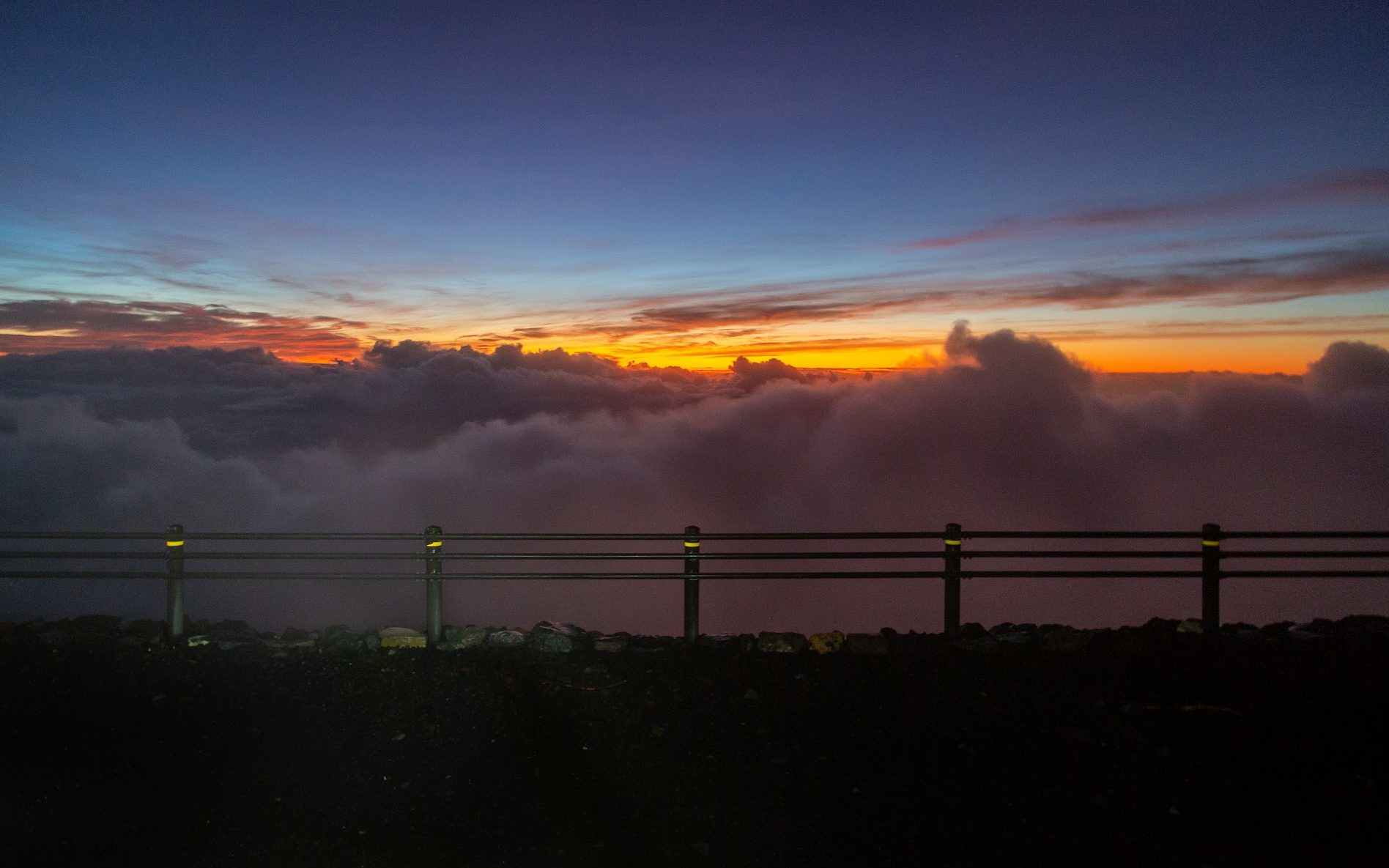
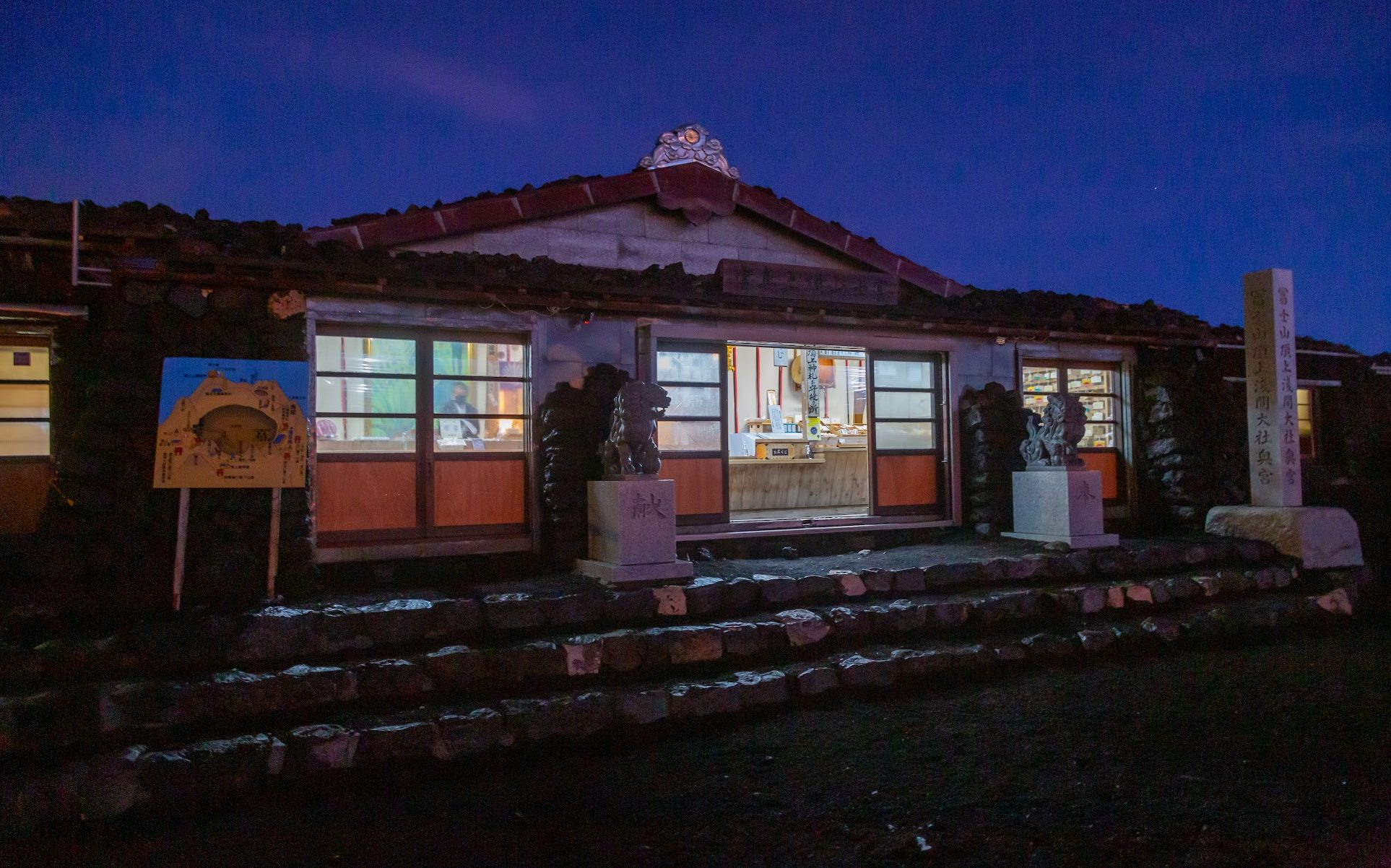
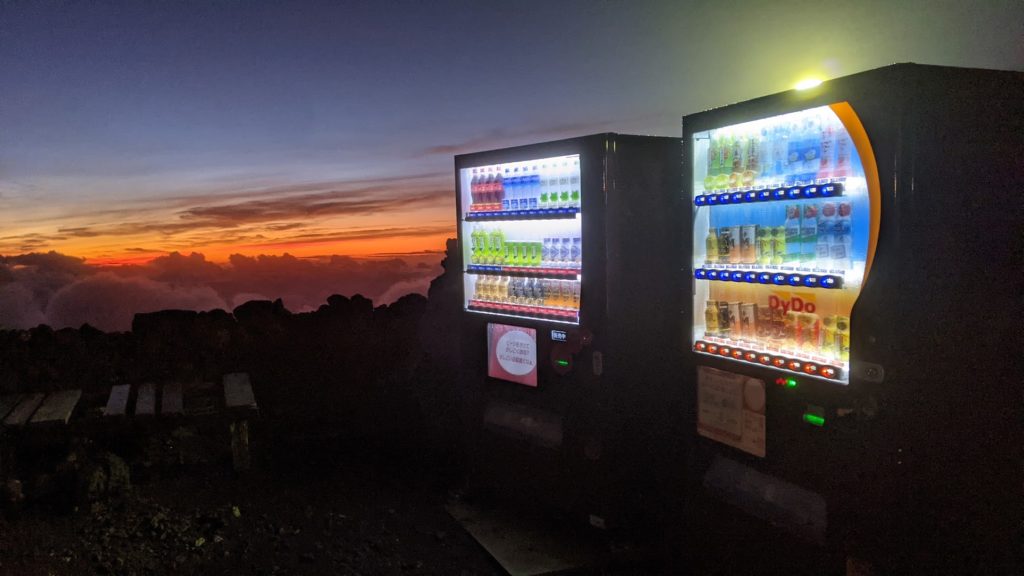
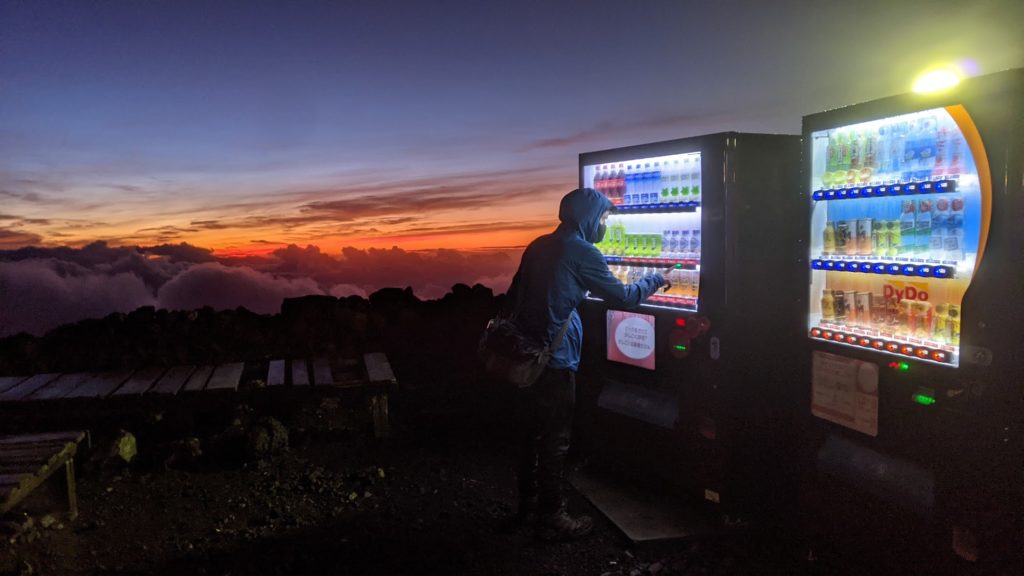
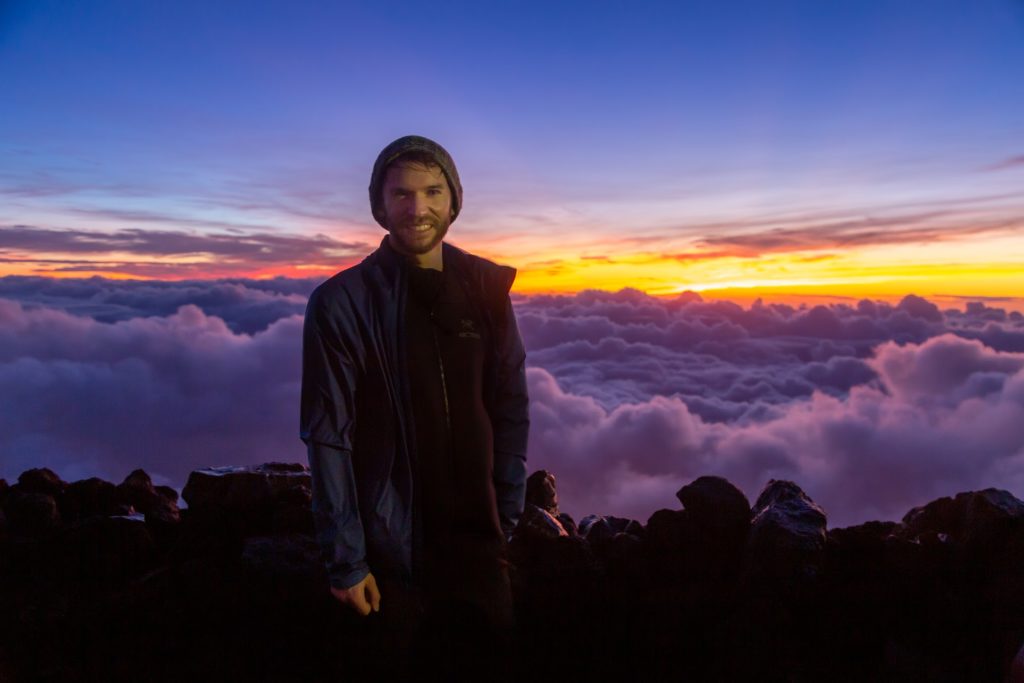
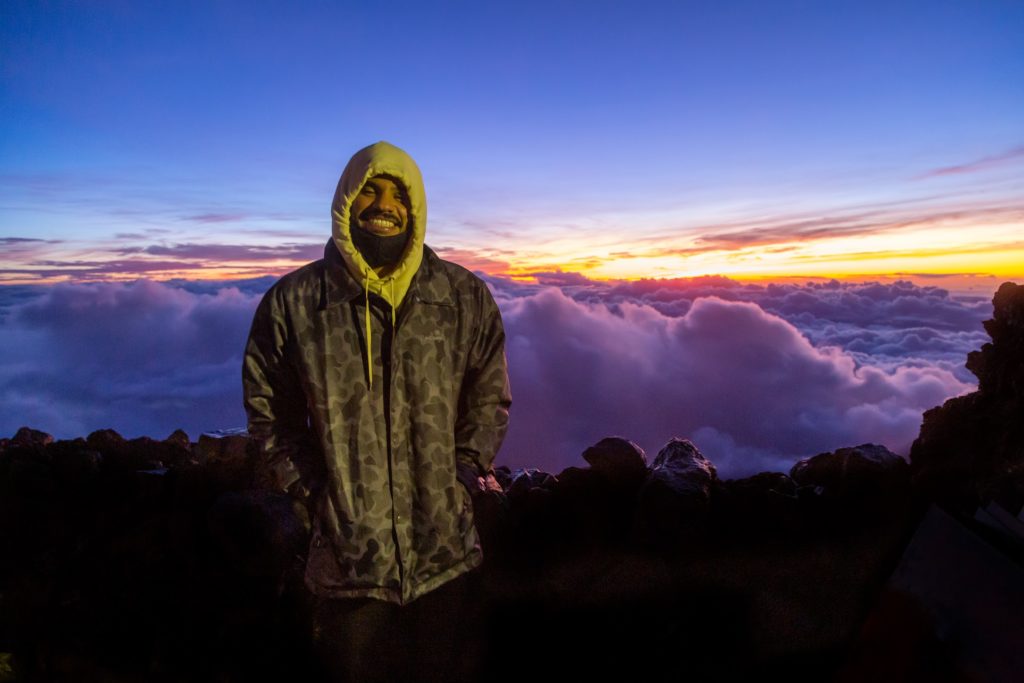
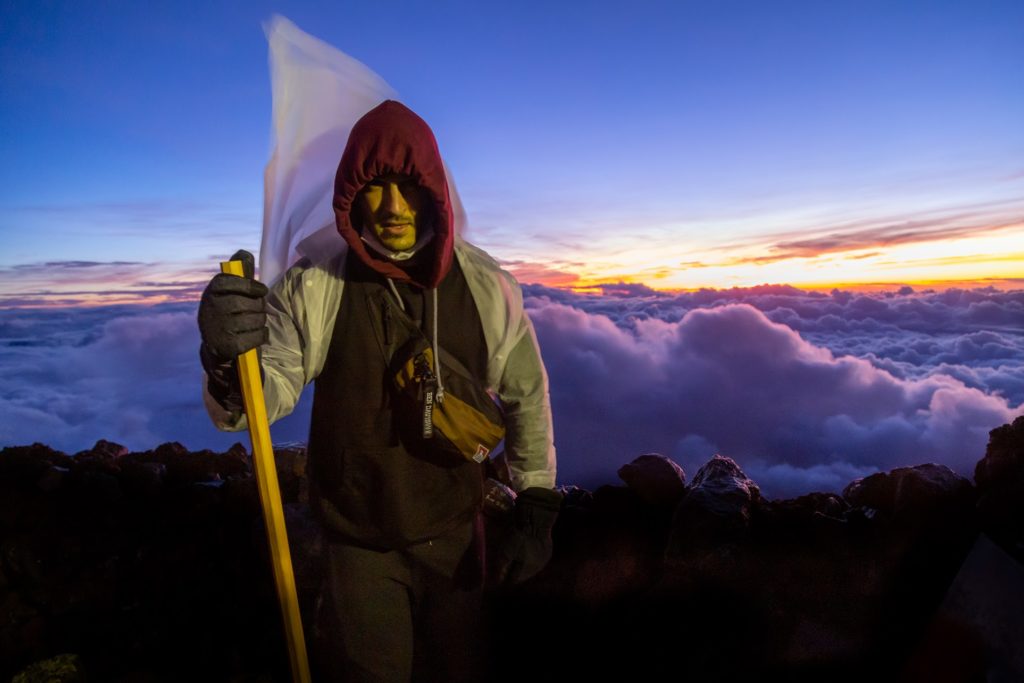
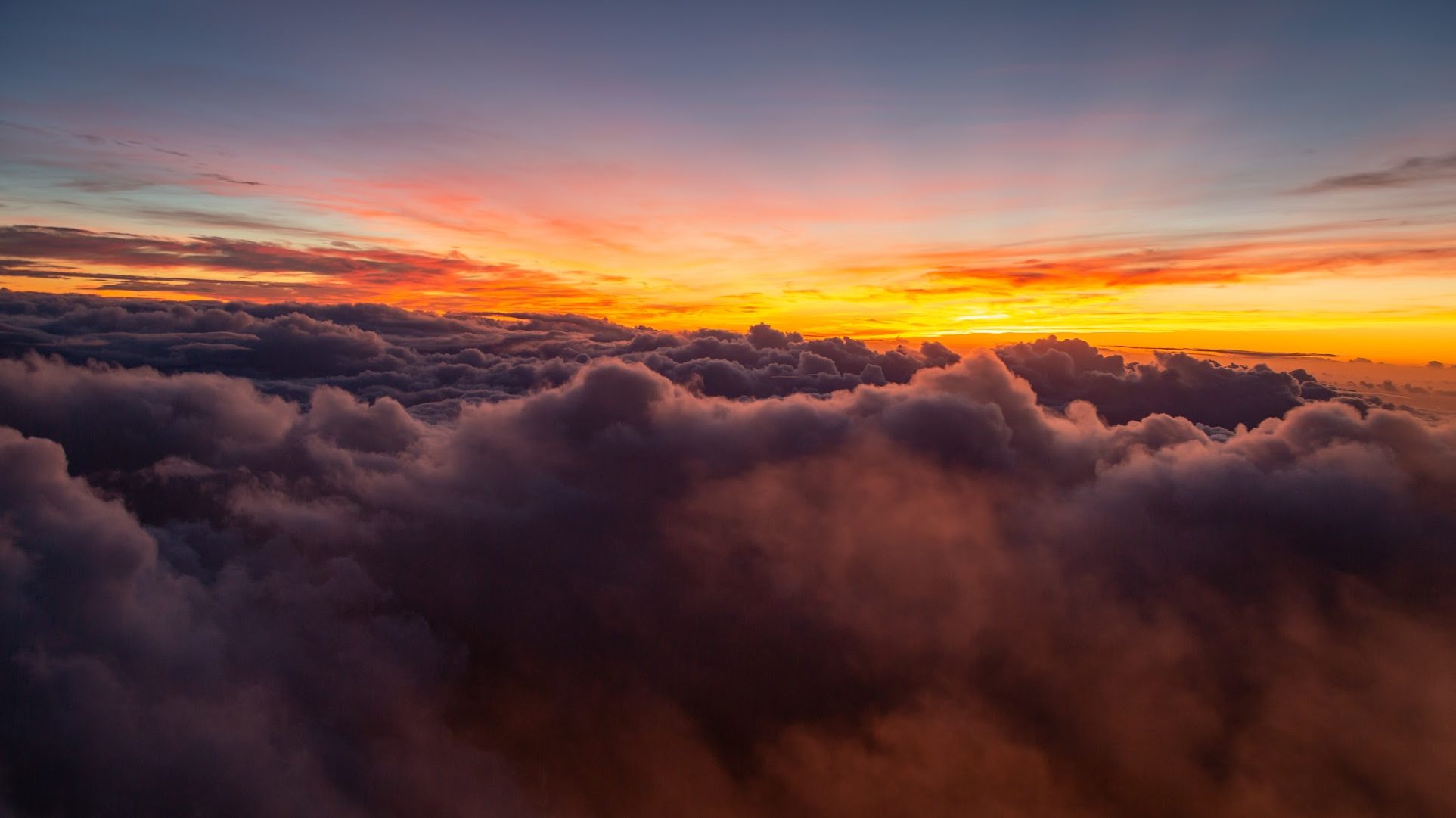
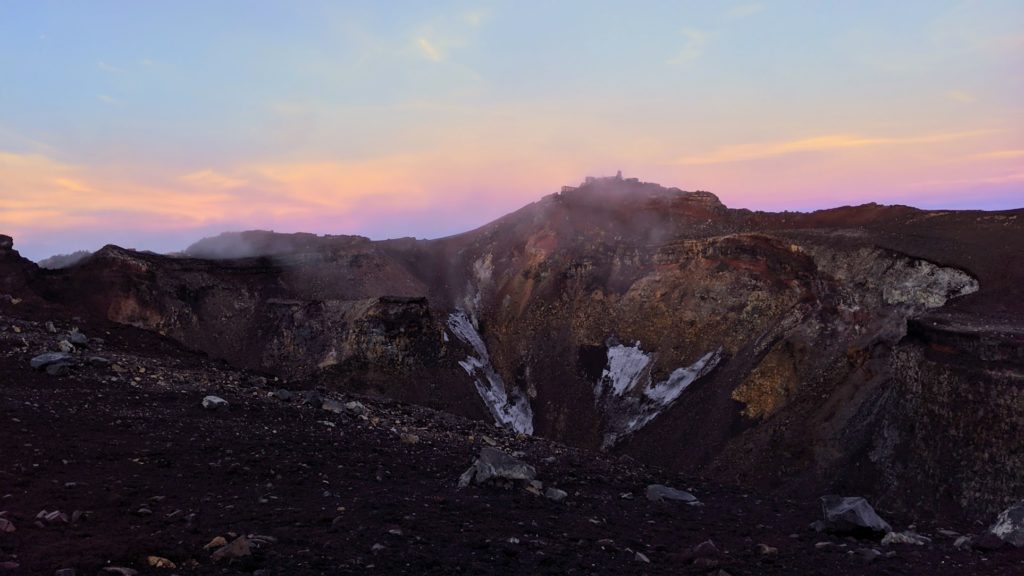
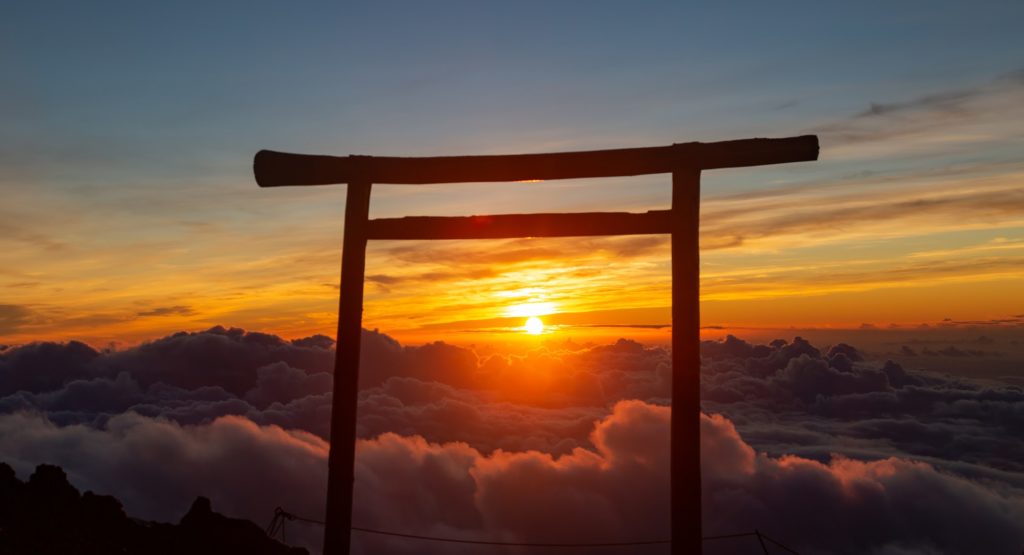
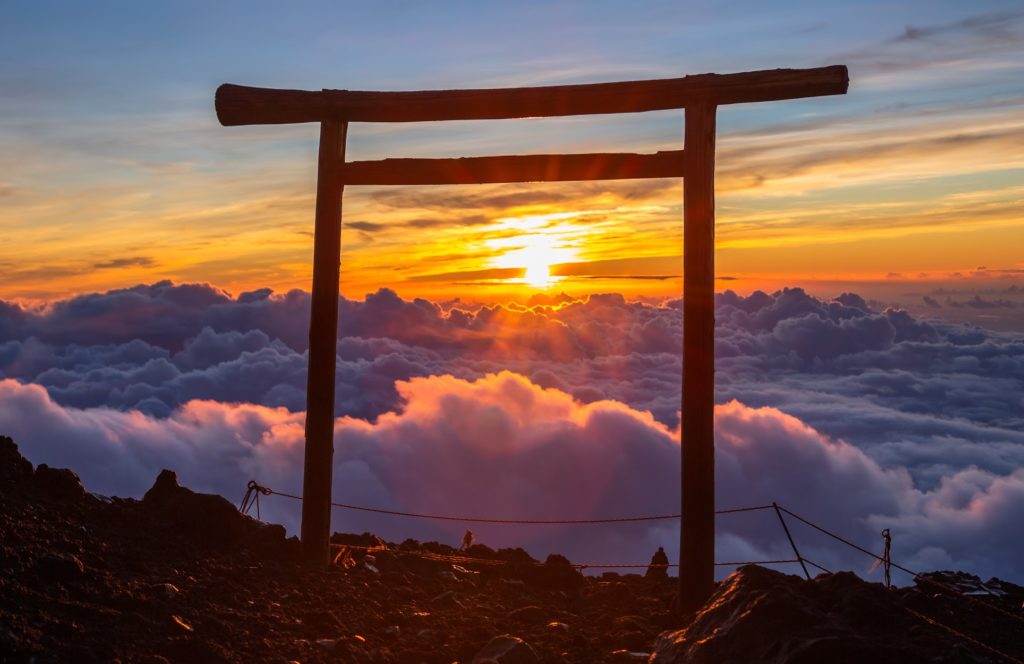
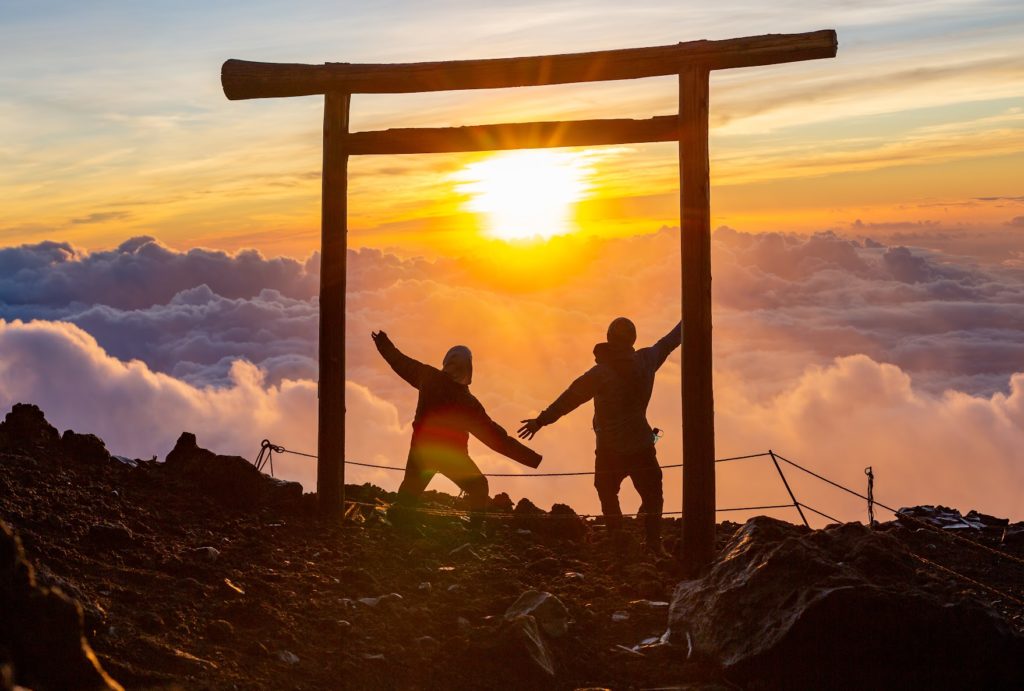
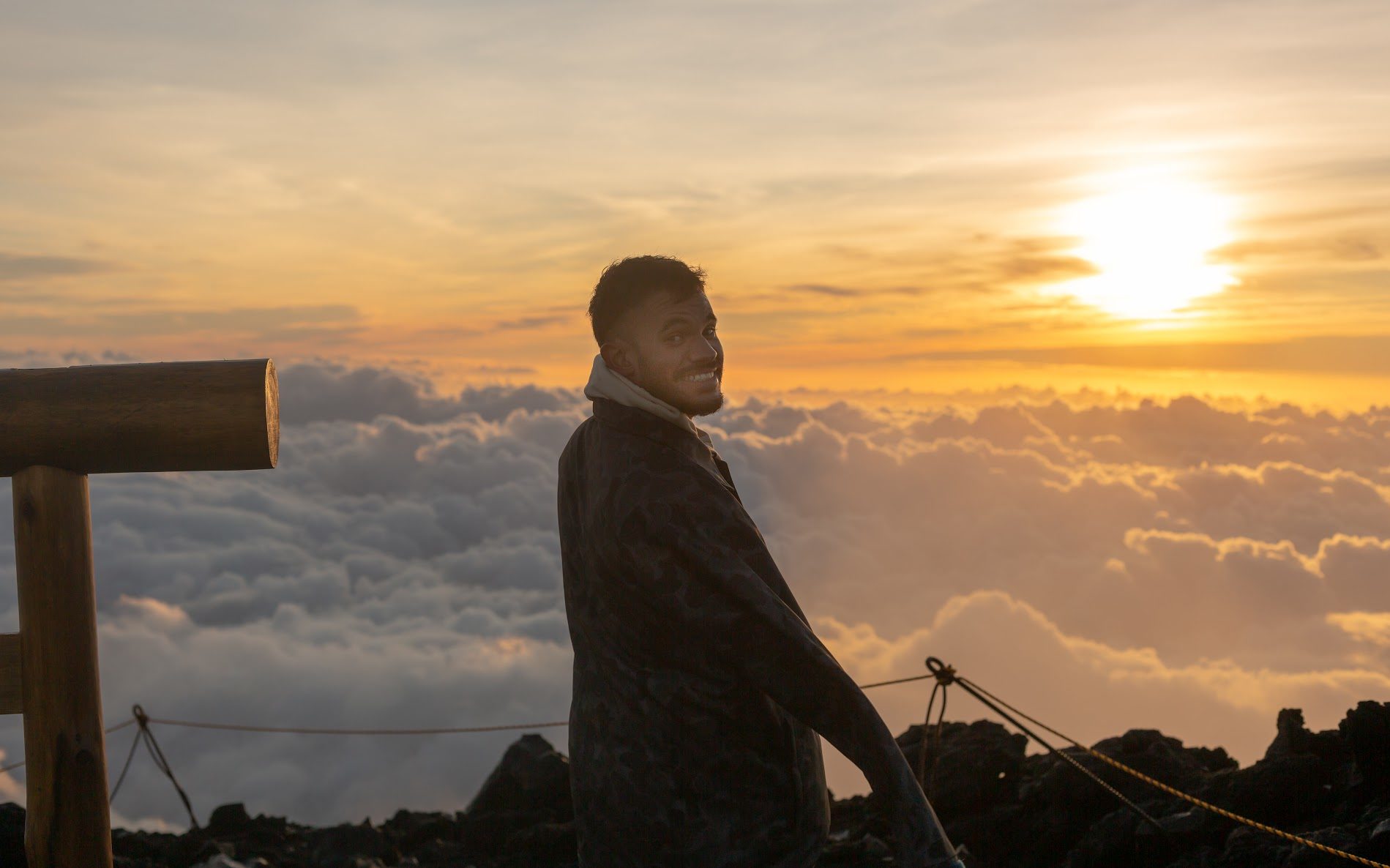
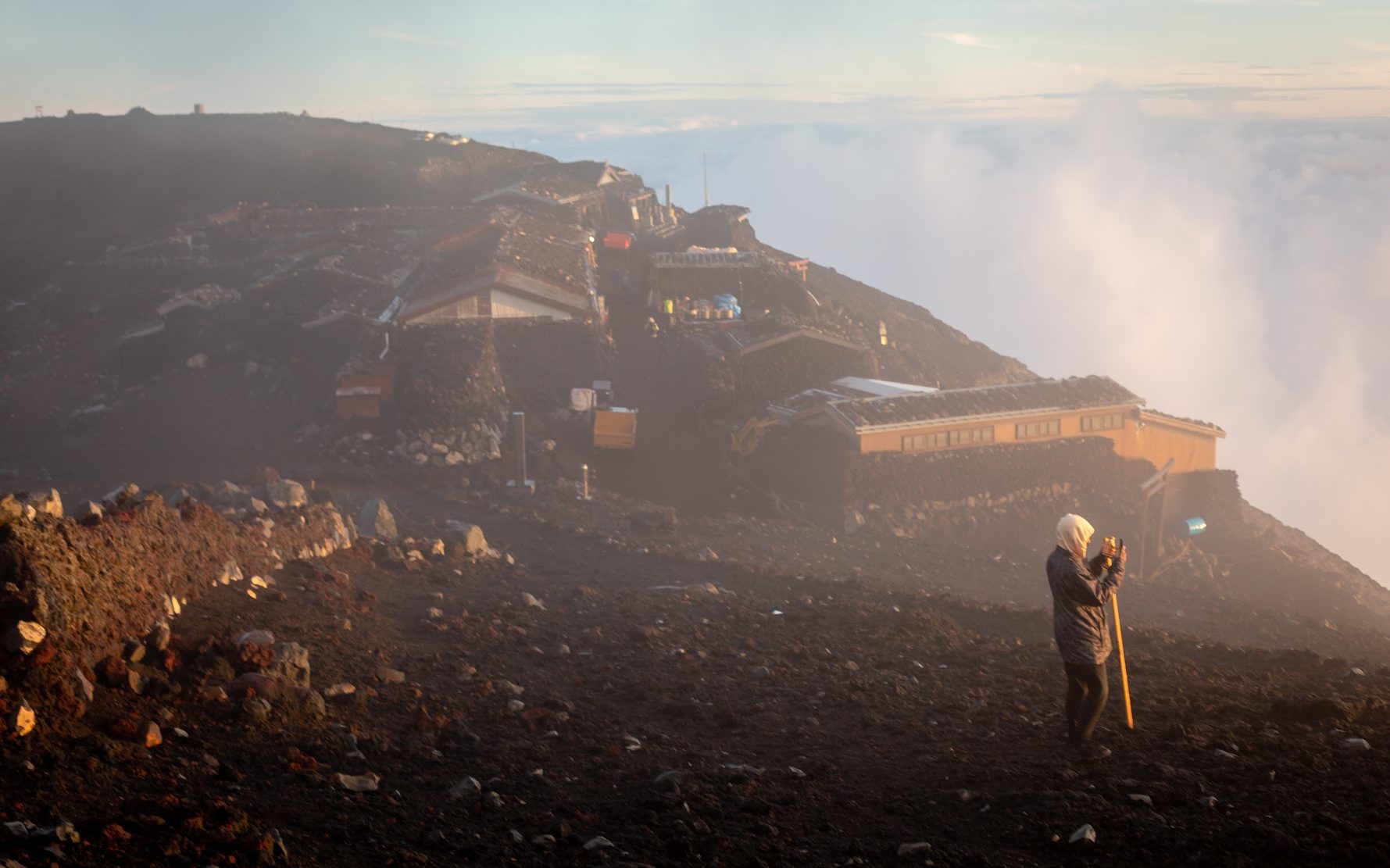
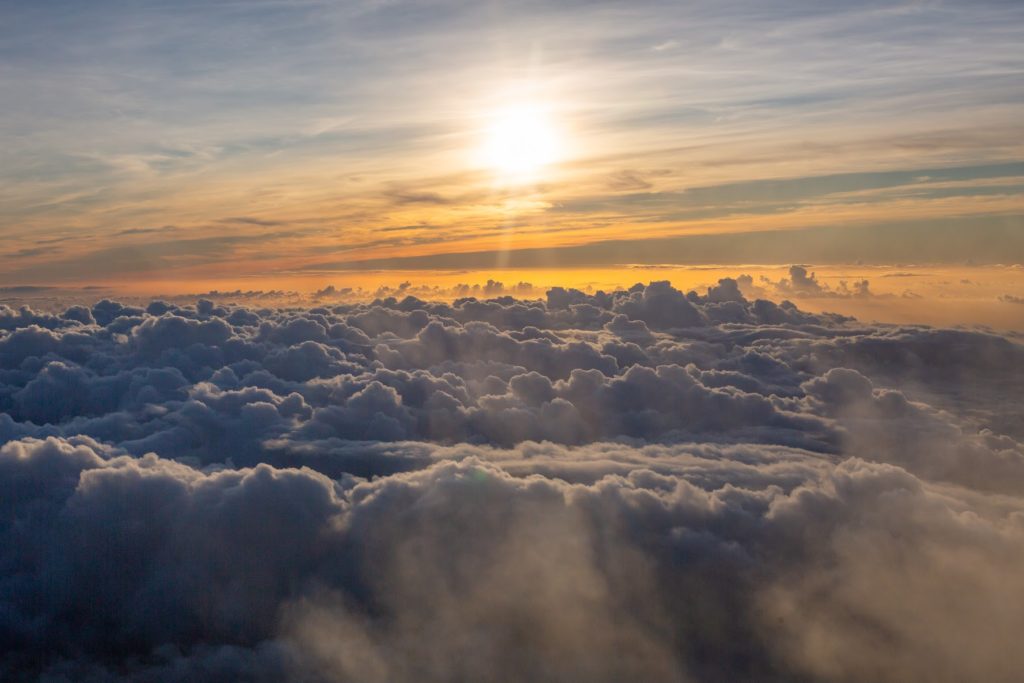
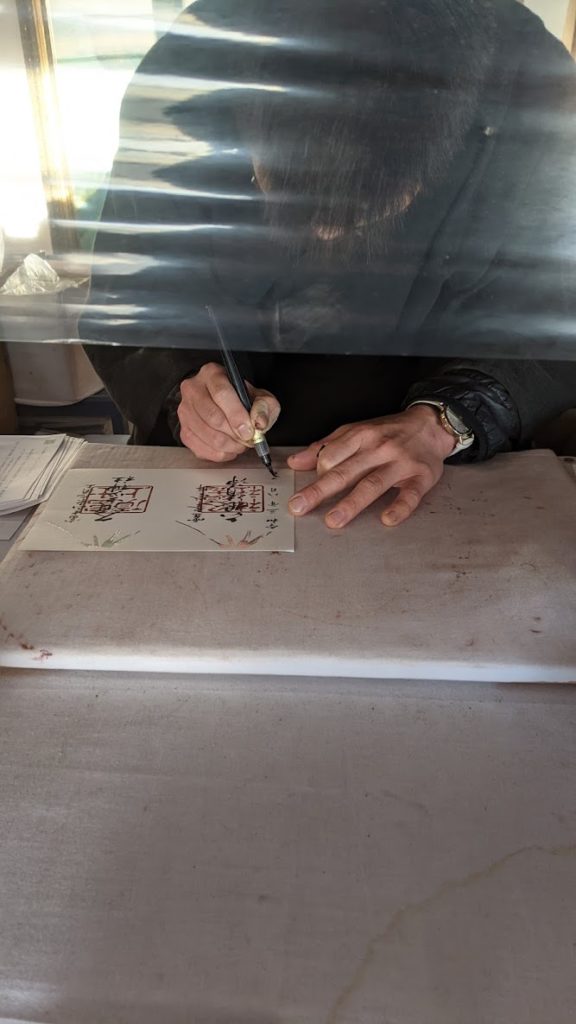
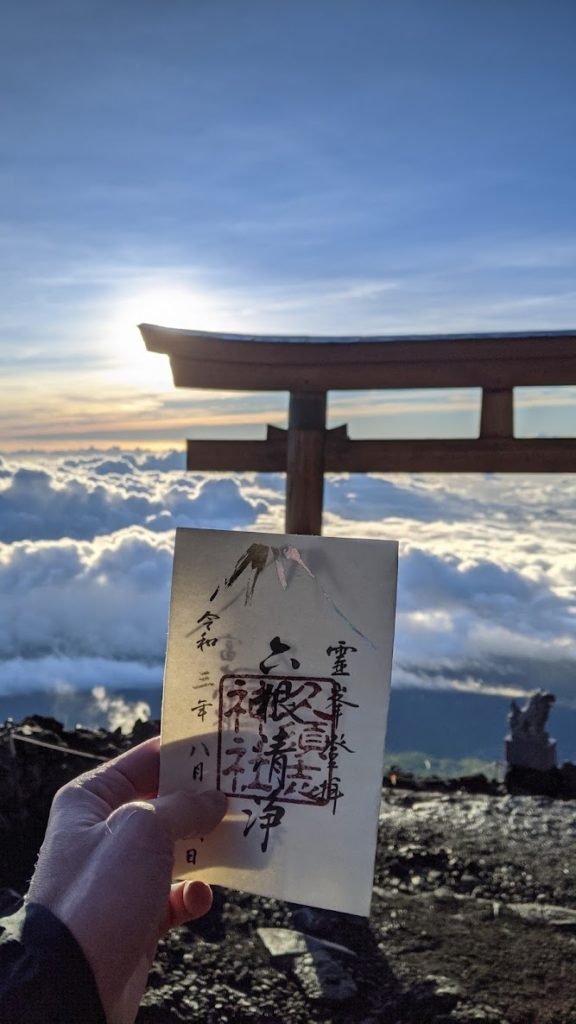
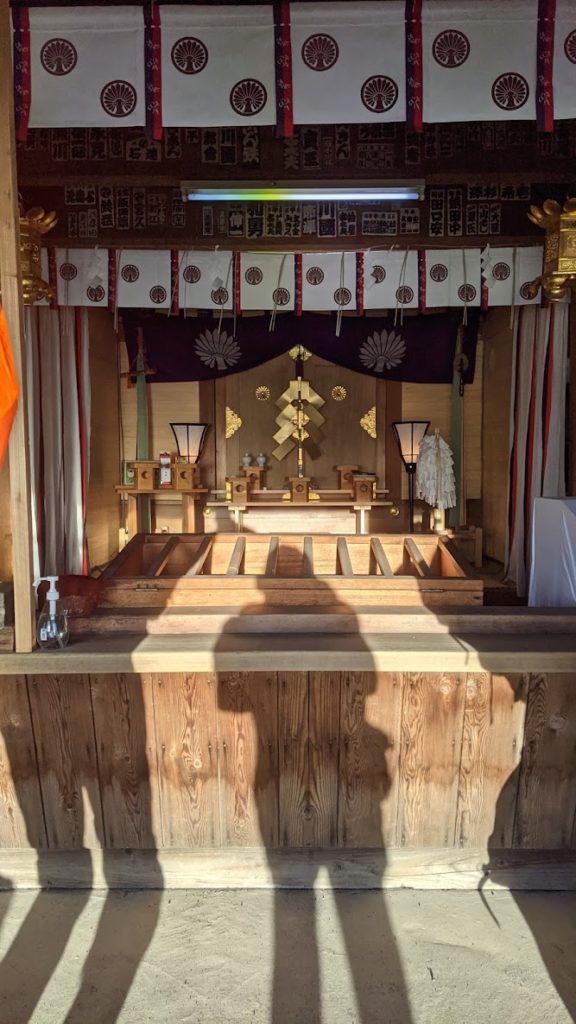
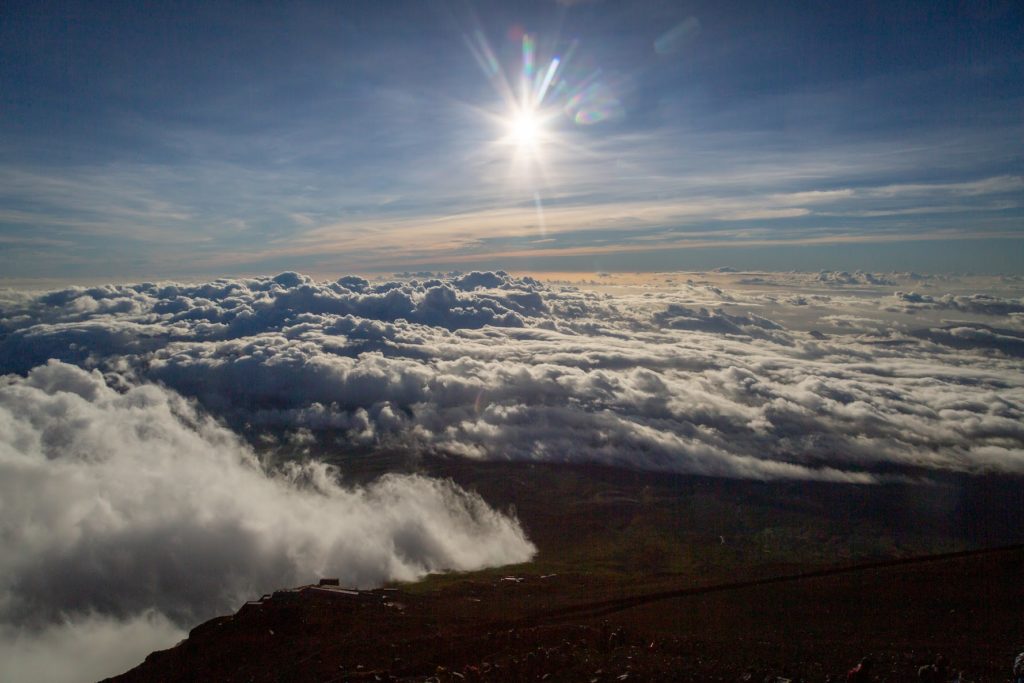
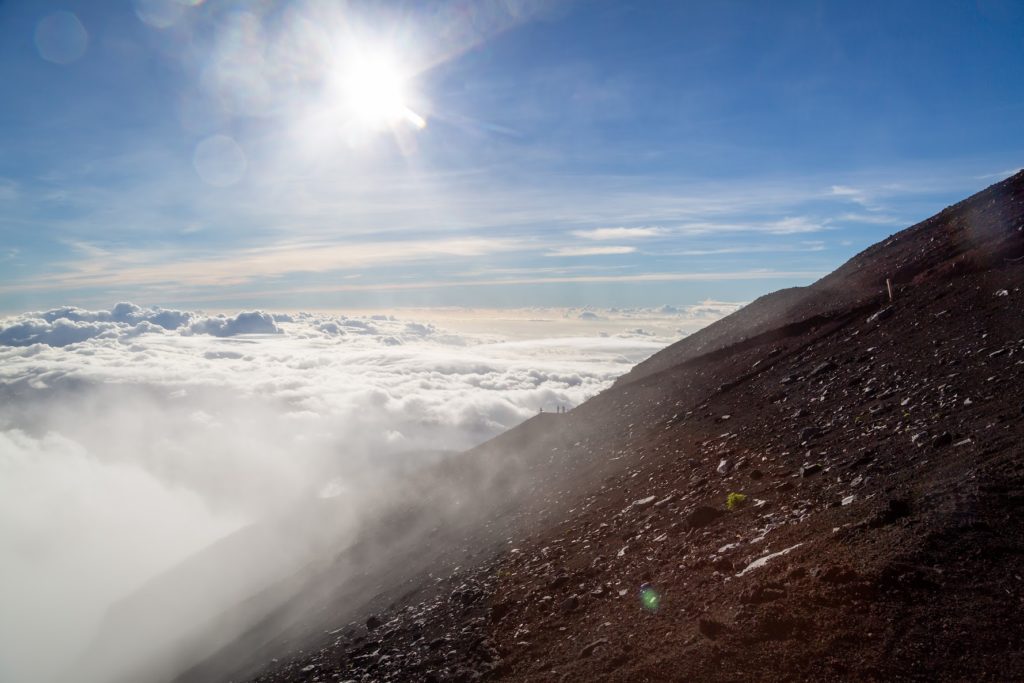
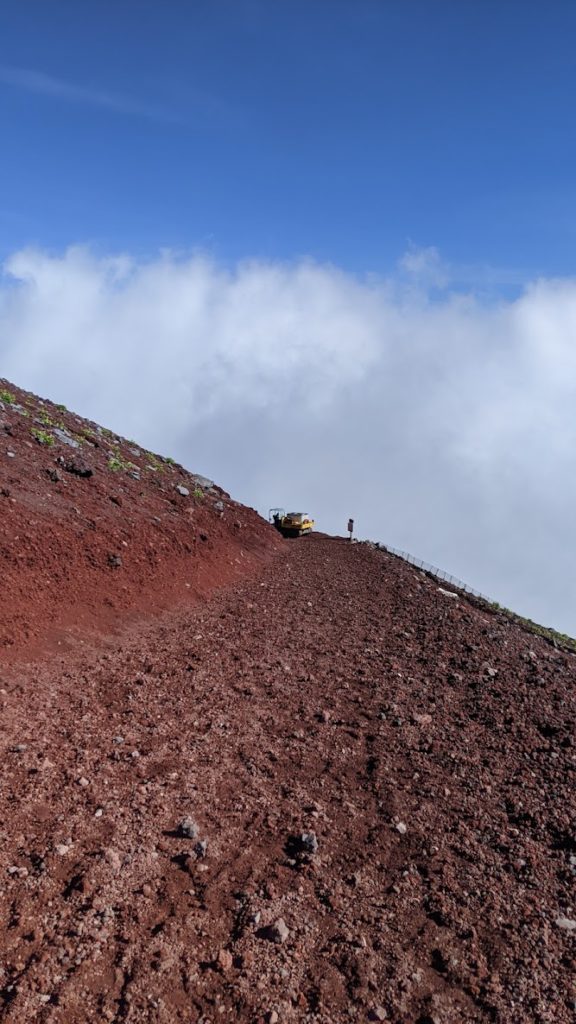
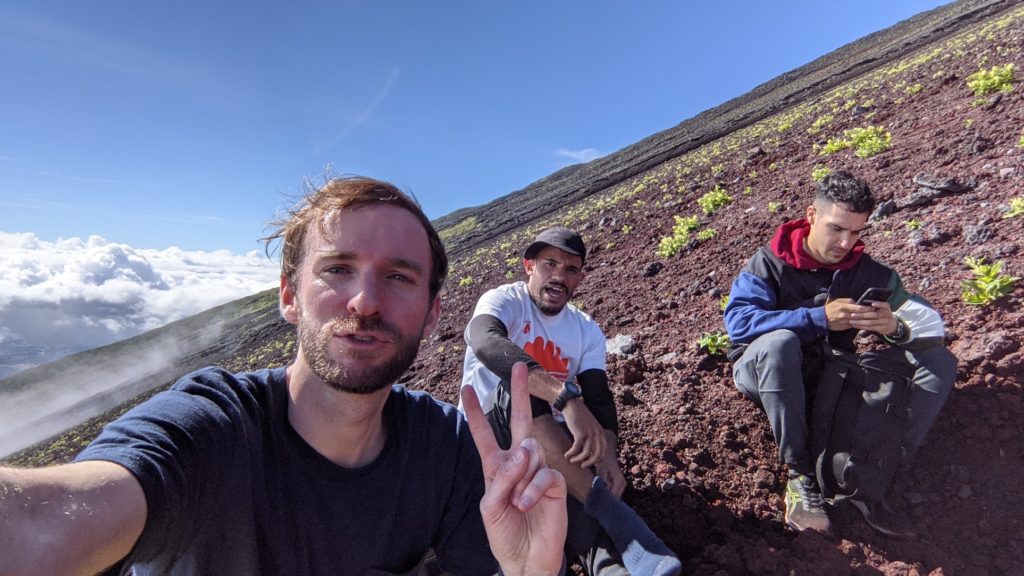
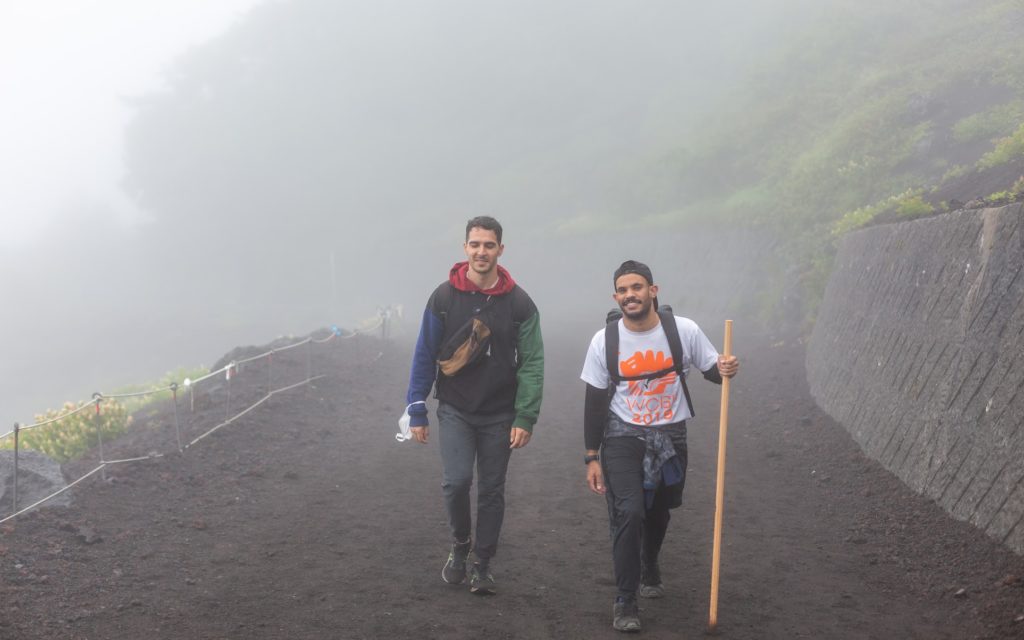
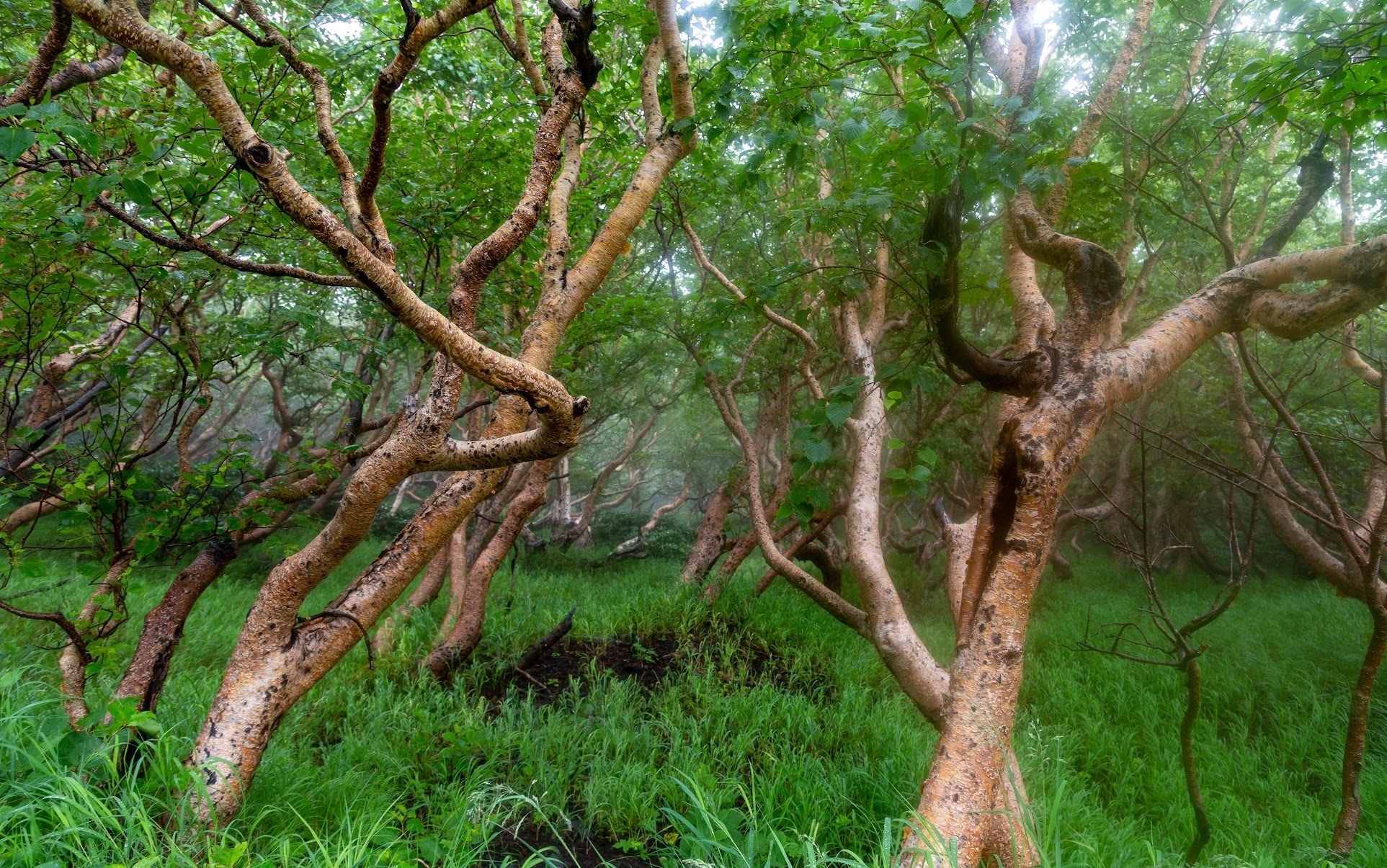
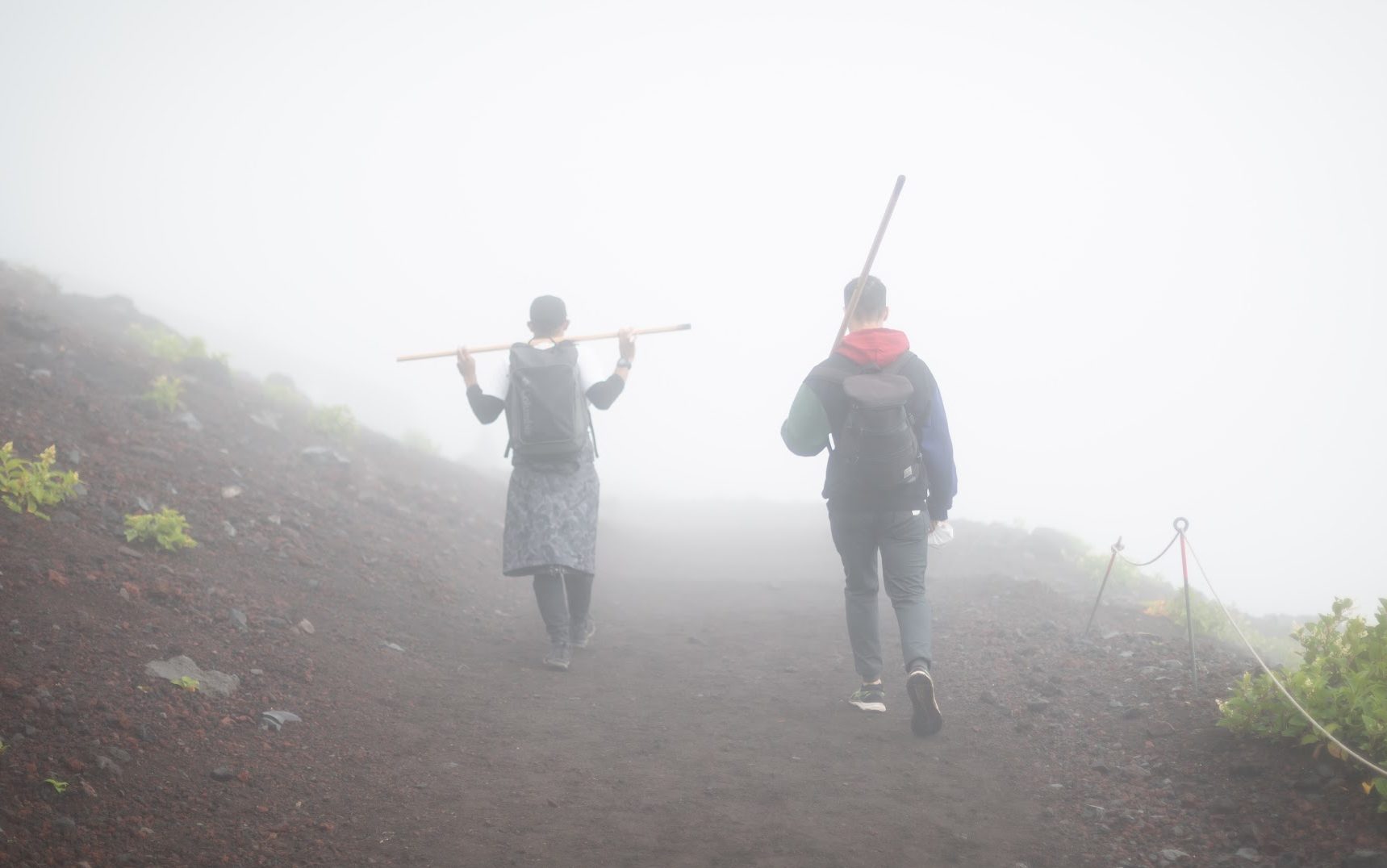
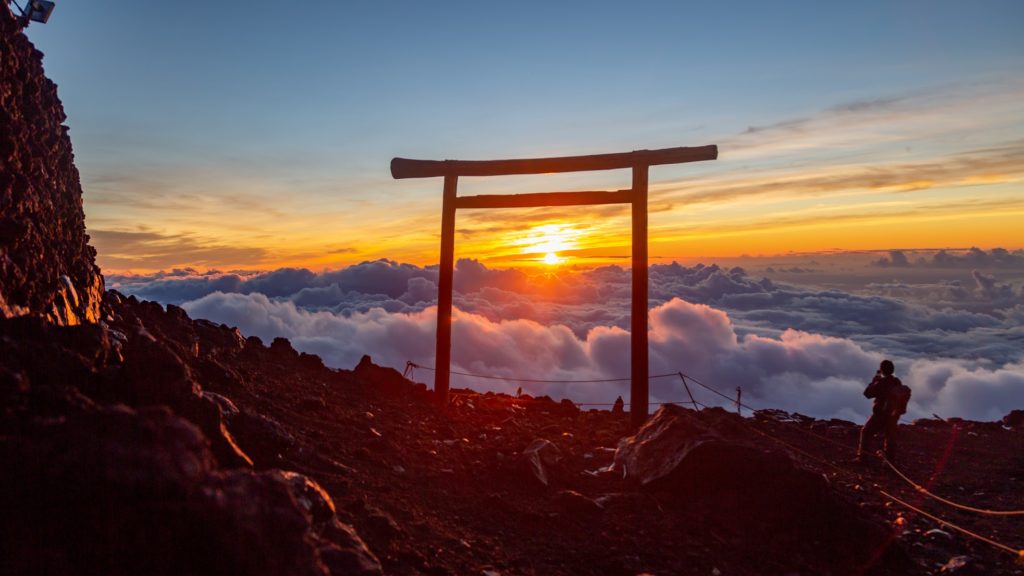
Where there is a will, there is a way.